Soft daylight, tailored privacy, and a hint of drama—bedroom windows shape how you rest, recharge, and even store items around the bed. Whether you crave uninterrupted vistas, improved acoustics, or tech-driven convenience, the right idea can turn glazed openings into genuine lifestyle upgrades. Below, you’ll find twenty distinct bedroom-window concepts, each distilled into a quick-read, 100-to-120-word guide packed with benefits and mini action steps you can put into practice right away.
1. Embrace Floor-to-Ceiling Bedroom Windows
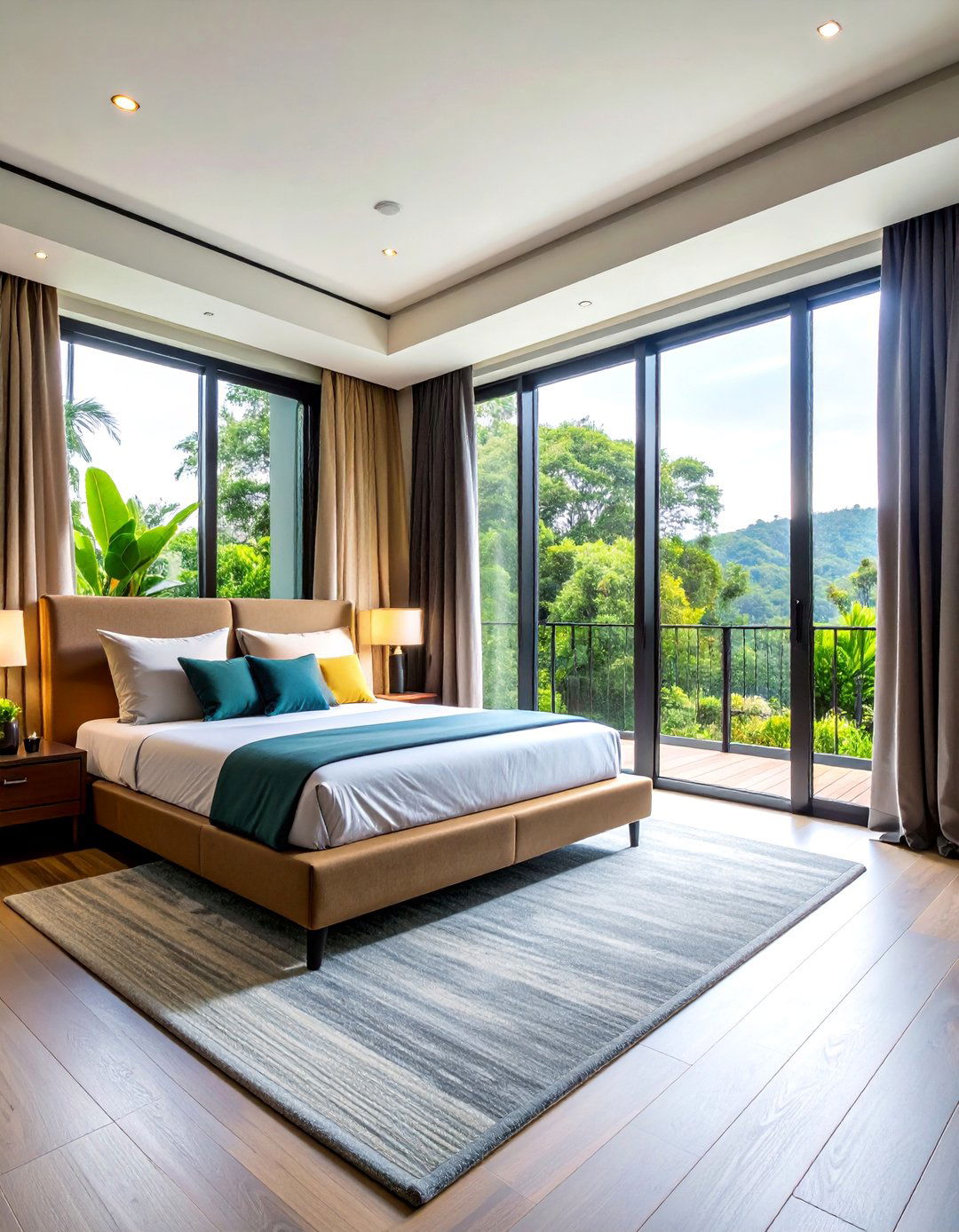
A sweeping pane that stretches from baseboard to soffit instantly amplifies light, lengthens sightlines, and anchors modern décor. Floor-to-ceiling glass has been linked to wellness perks like elevated mood and reduced dependence on artificial lighting. Gauge orientation first; south-facing walls bask in sun but may need low-E coatings or overhangs for heat control. When privacy is a concern, layer motorized sheers behind blackout drapes so daylight pours in by day and total darkness settles in by night. Structure-wise, request thermally broken frames to cut condensation. If you’re in a windy zone, ensure wind-load calculations match local code. Finally, anchor the sill line just above finished flooring for a seamless, hotel-suite finish.
2. Add a Cozy Window-Seat Nook
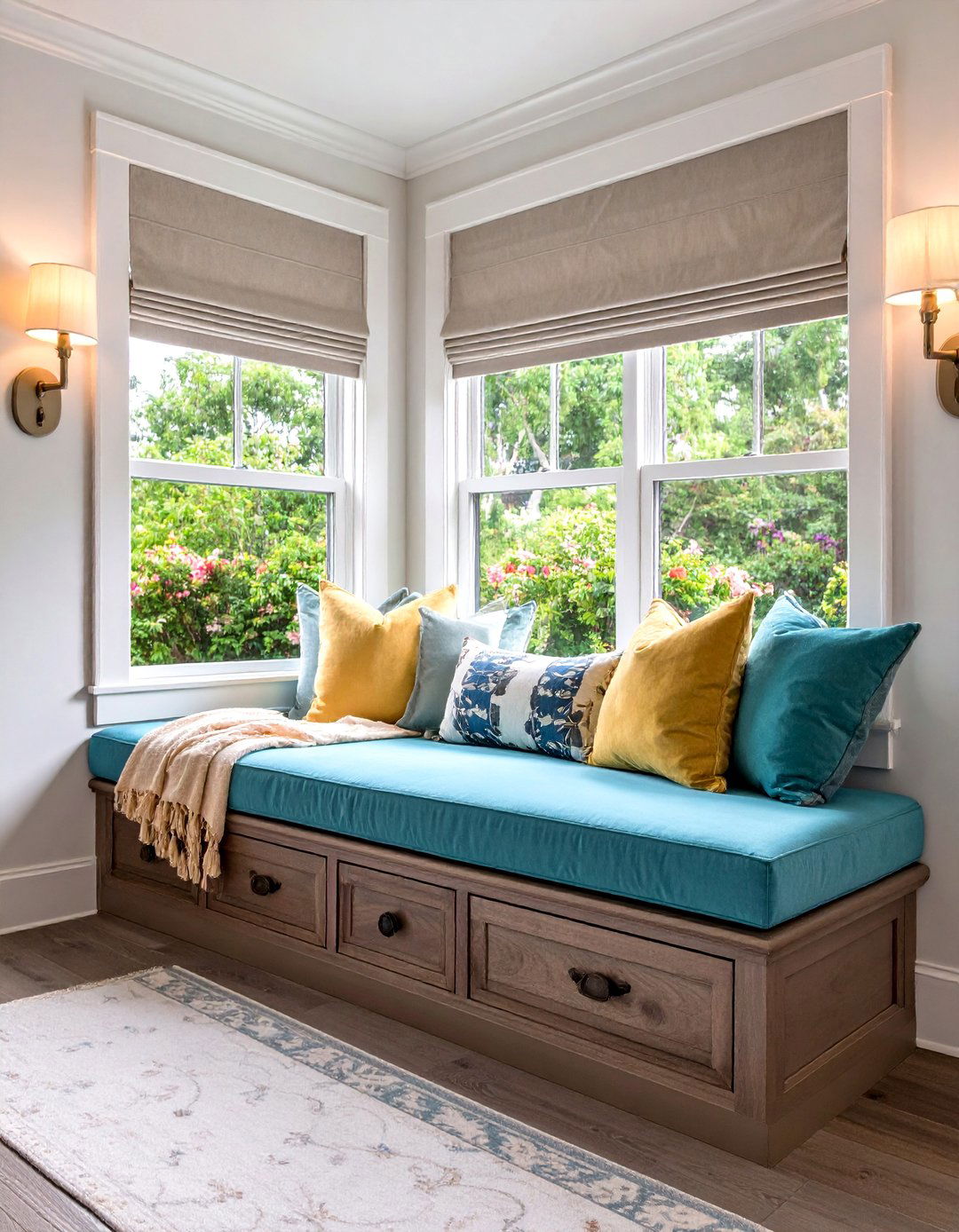
Few upgrades feel as instantly inviting as a built-in window seat. Designers note that even in compact rooms, the bench adds seating, hidden storage, and resale appeal—especially where square footage is tight. Specify seat height near 18 inches and depth around 20 inches so it doubles as a reading perch or quiet laptop zone. Hinged lids hide bedding sets; deep drawers tackle out-of-season shoes. Upholster the cushion in a performance fabric to resist sun fade, then flank with sconce lighting for nighttime reading. If the opening faces strong sun, integrate top-down-bottom-up shades so light floods the ceiling while glare stays out of eyes.
3. Use Minimalist Sheer Panels for Soft Light
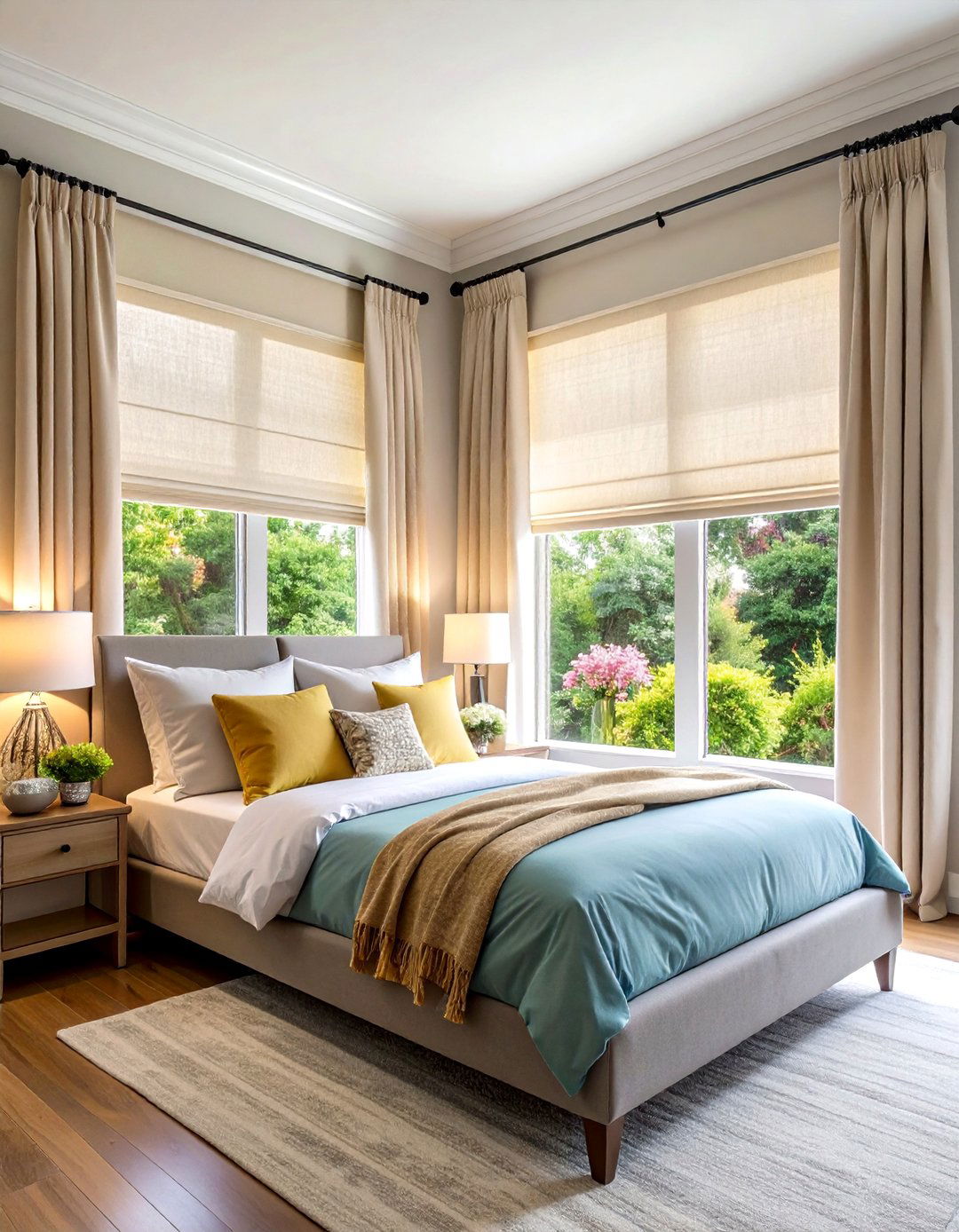
With design trends tilting minimalist for 2025, barely-there sheers in neutral hues continue to dominate bedroom windows. The beauty lies in balance: gauzy fabrics scatter glare, protect furniture from UV rays, yet keep walls bright. Mount rods eight inches above the frame to exaggerate height, and run panels wall-to-wall so glass appears broader. Opt for linen or recycled polyester to avoid heavy ironing. If dawn arrives too early, layer sheer panels in front of motorized roller shades that rise silently behind—letting morning sun filter in only when you’re ready.
4. Install Motorized Blackout Shades for Deep Sleep
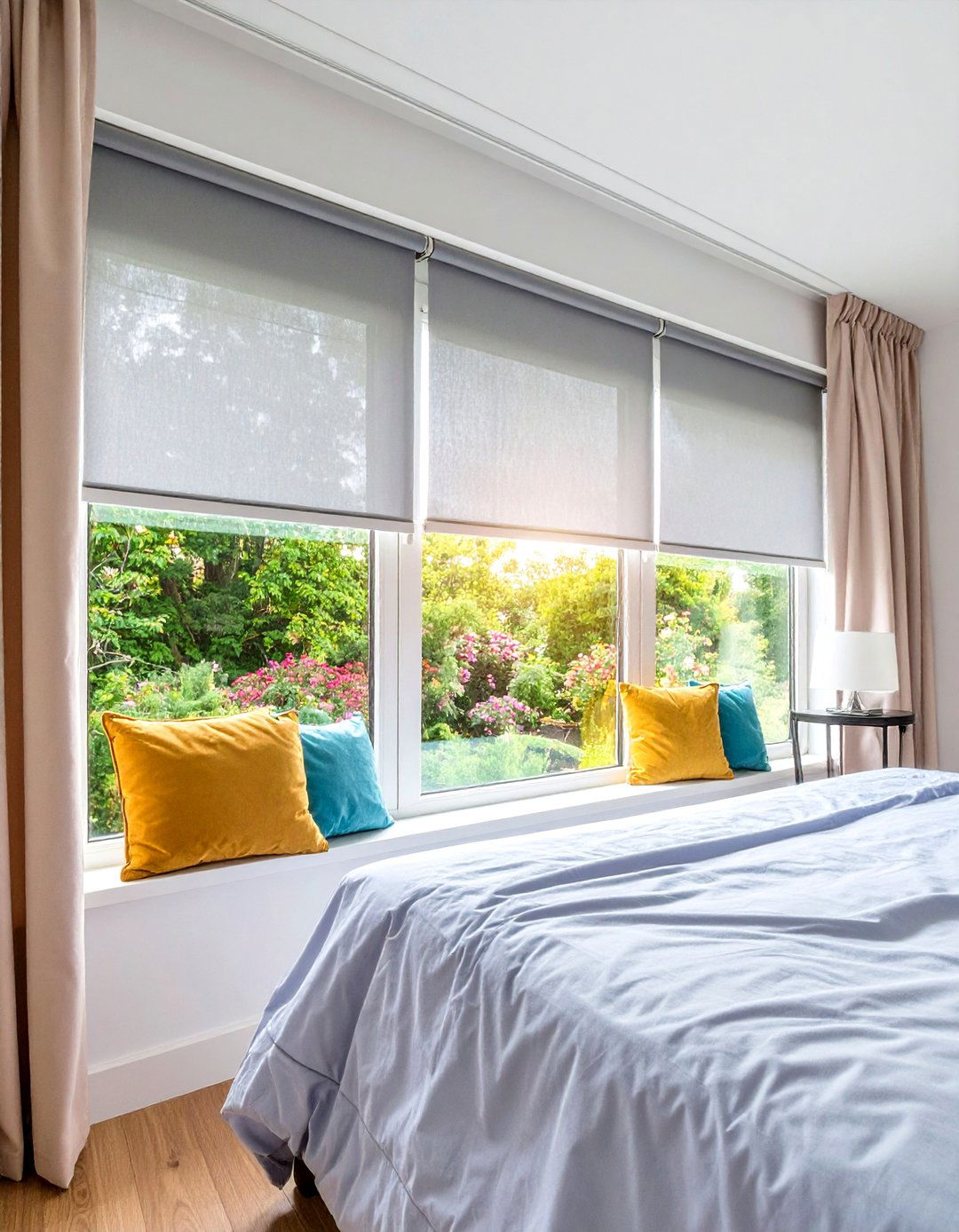
Research shows that even low-level night light disrupts REM cycles and reduces sleep efficiency. Eliminating stray glow is easier with motorized blackout shades. Battery-powered units install without wiring; hard-wired versions tie into your smart-home ecosystem for “Goodnight” voice commands. Choose side-channel tracks to block halo light, then program gradual sunrise modes to nudge circadian rhythms gently. Remember to pair motors with a manual override so a power outage doesn’t strand the fabric mid-pane. For a plush hotel vibe, hide the roller in a recessed header and cap it with a slim valance.
5. Highlight the View with Picture-Frame Trim
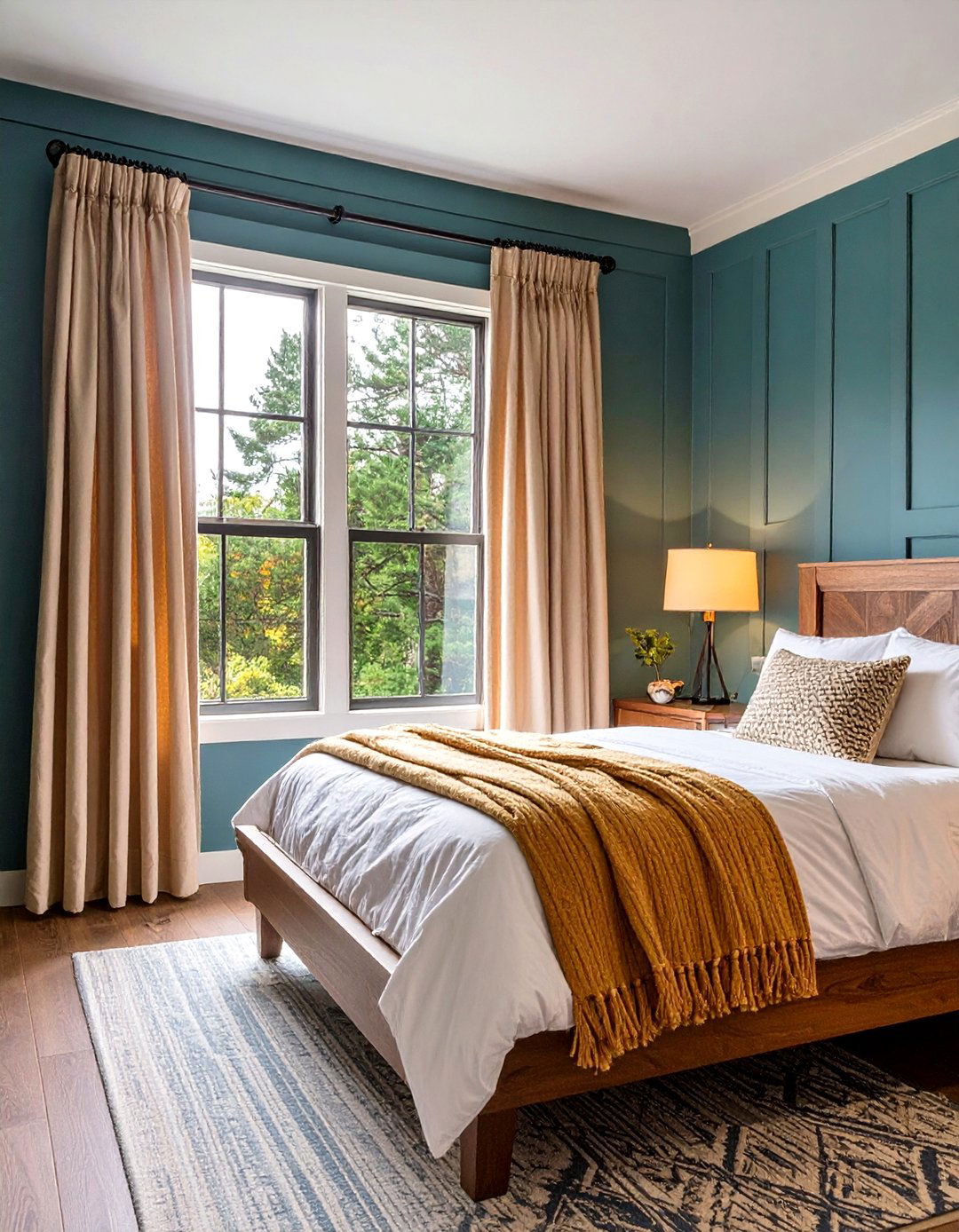
A crisp picture-frame casing—equal boards on all four sides—turns any window into an architectural focal point. Use the trick when a panoramic view is your art: thin, squared-off trim (about 1x4 inches) keeps sightlines uncluttered, while slightly chunkier boards create a gallery feel. Paint casing the same color as the wall for seamless expansion or contrast it in charcoal for modern pop. Where moisture is an issue, swap MDF for finger-jointed pine primed on all faces. Finally, anchor drapery hardware to the header, not the jambs, so the frame itself stays visually uninterrupted.
6. Try Switchable Privacy Smart Glass

If your bedroom shares a wall with neighbors, switchable glass offers privacy at the tap of a button. An embedded film turns panes from transparent to fully opaque in under a second while still allowing daylight to diffuse, cutting heat gain and boosting security in the process. Install panels in ensuite door cut-outs or as the primary window glazing. Because smart glass is laminated and tempered, it doubles as a strong barrier. Have an electrician run low-voltage leads through the jamb for clean concealment, and specify a controller that integrates with Alexa or Google Home for effortless toggling.
7. Opt for Energy-Saving Double-Glazed Glass
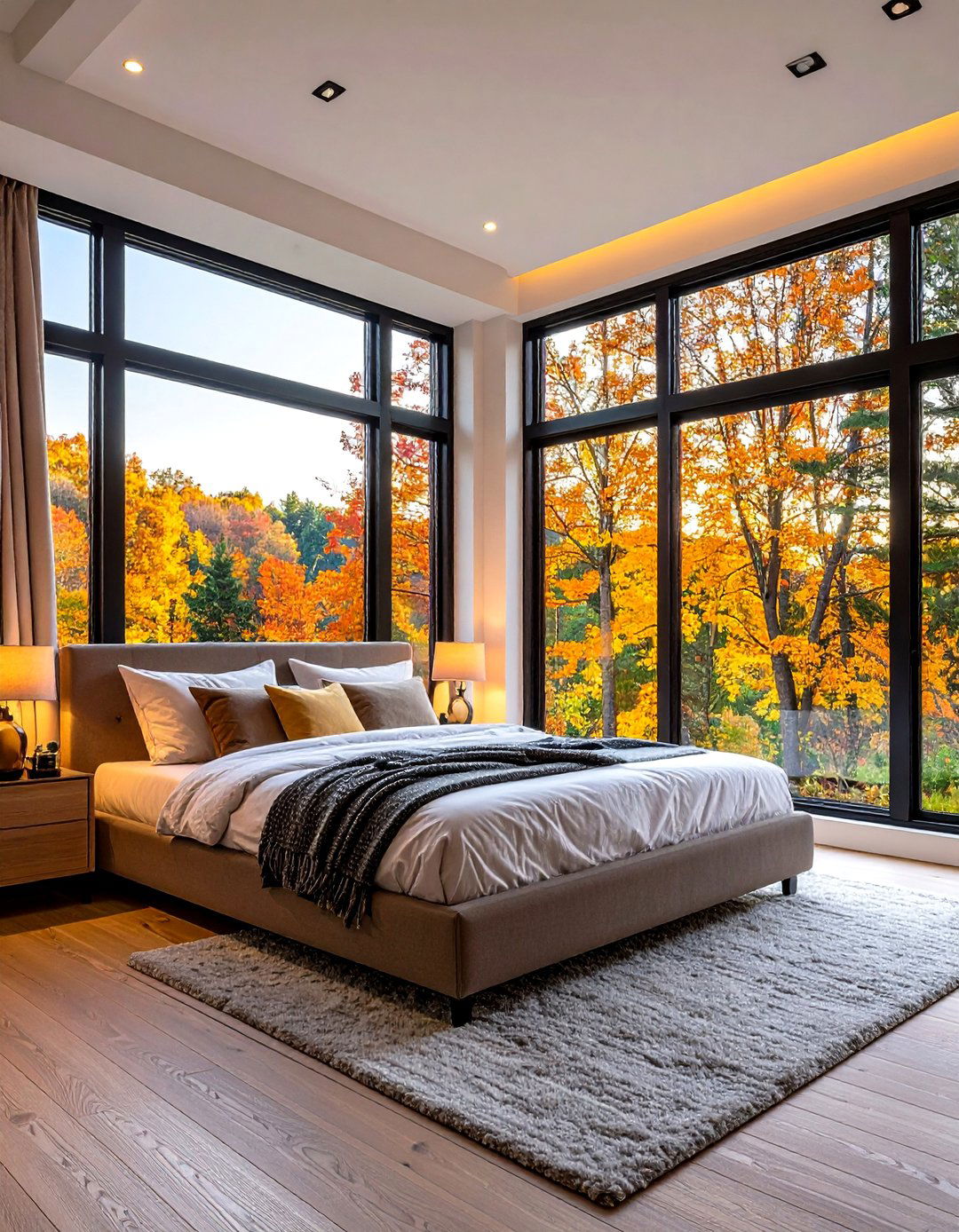
Double-glazed units trap an insulating gas layer that slashes winter heat loss and muffles outdoor clamor. Compared with single glazing, modern acoustic double-glazing cuts intrusive noise dramatically while keeping interiors cooler in summer. For bedrooms on noisy streets, request glass packets with asymmetric panes—each pane a different thickness—to disrupt sound waves. Add warm-edge spacers to combat condensation, and check U-value specs of 1.1 W/m²K or lower for real thermal dividends. If frames date back decades, retrofit inserts give performance gains without tearing out trim.
8. Introduce Clerestory Windows for Wall Space
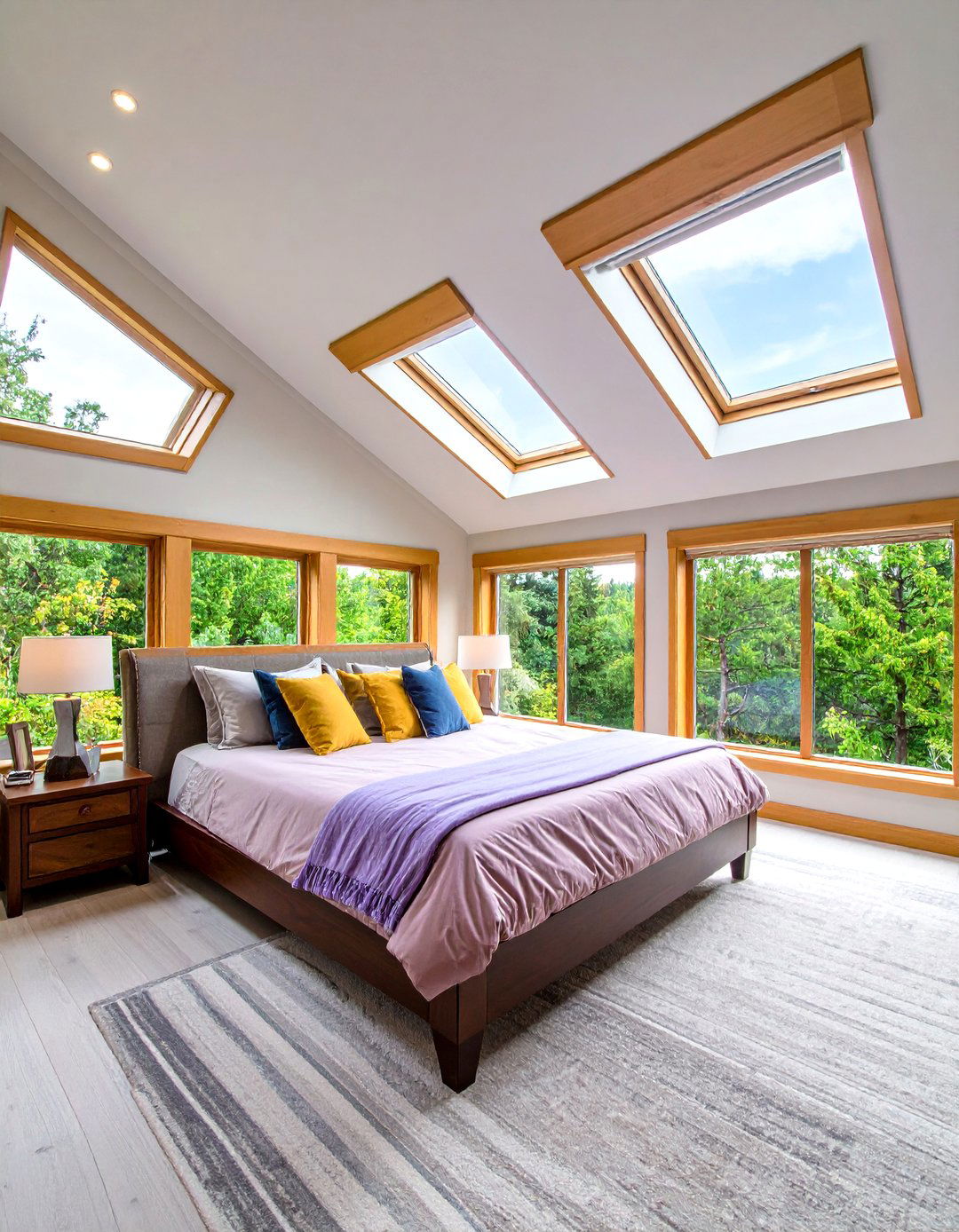
Clerestory openings—set high near the ceiling—flood rooms with daylight while preserving privacy and frees up wall area for headboards or wardrobes. Because direct glare lands above eye level, you can skip most treatments, though motorized high-reach shades exist for media rooms. Angle the glass toward the sky in deep eaves for constant ambient glow, and specify insulated units to counter hot-climate heat gain. When combined with lower operable frames, clerestories create a passive-stack effect, letting warm air vent upward on summer nights.
9. Frame Windows with Dramatic Layered Drapes
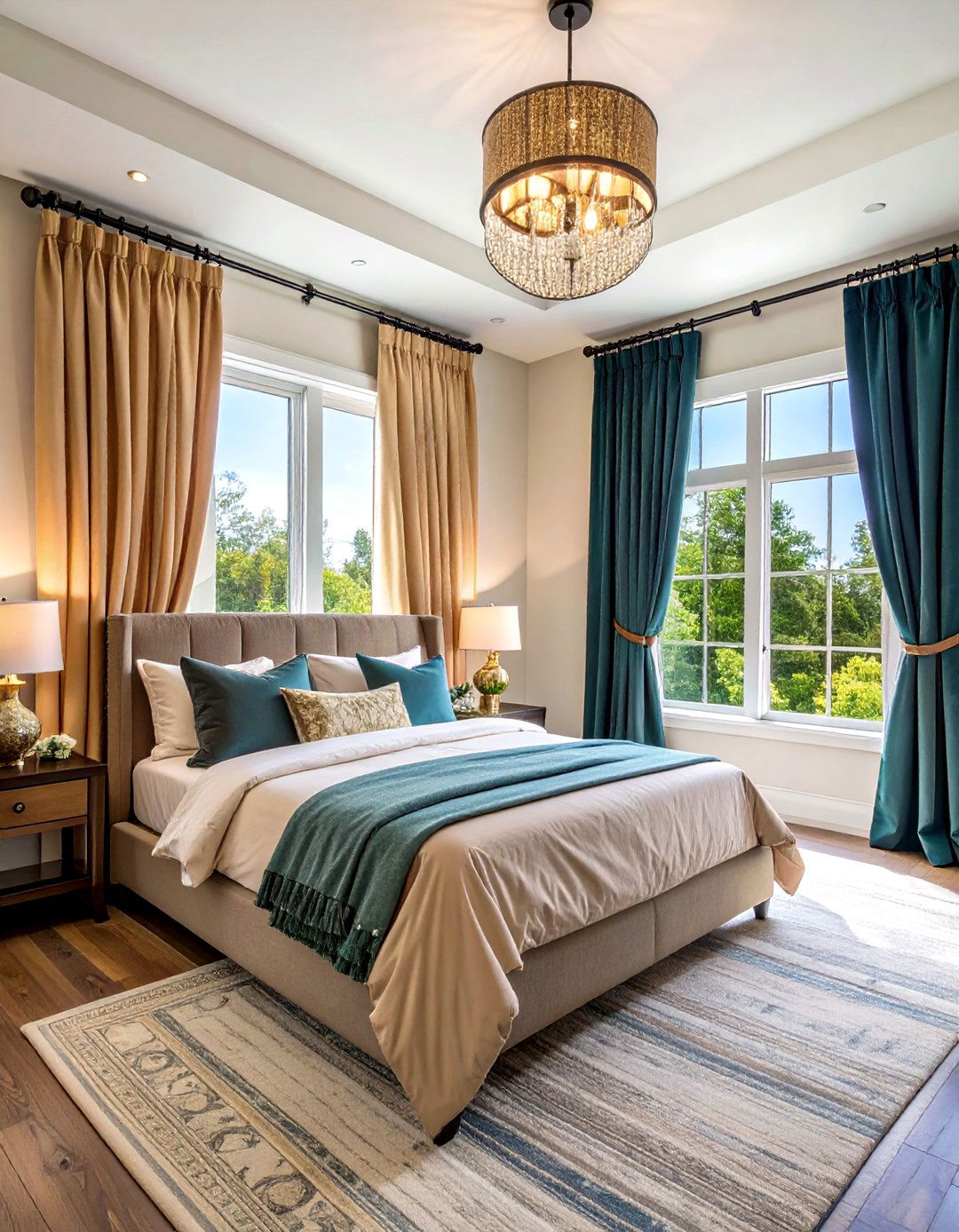
Design pros predict luxurious floor-puddling drapes—sometimes sweeping to the ceiling—as a 2025 favorite. The layered approach marries blackout privacy with airy sheers, giving you all-day flexibility. Start with sleek track hardware recessed in the ceiling so fabric appears to float. Choose a heavyweight outer layer in velvet or a textured weave to insulate; behind, hang lightweight voiles for diffused radiance. Color-wise, go tone-on-tone with bedding to calm the space, or spice white walls with a saturated jewel tone. Hem panels one-half inch above the floor to avoid dust collection.
10. Incorporate Roman Shades for Tailored Charm
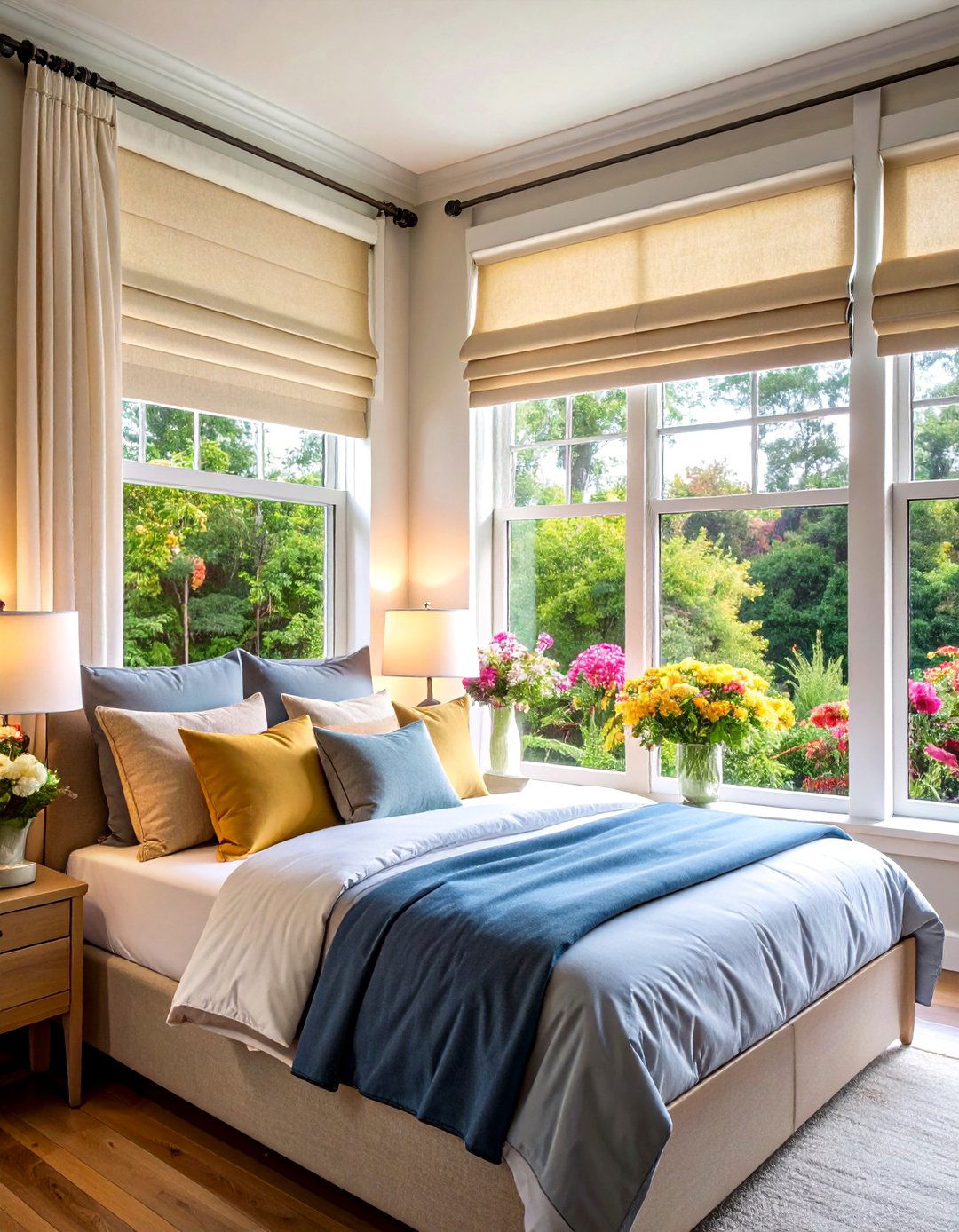
Roman shades fold into neat horizontal stacks, offering fabric elegance without curtain bulk. Mount them inside the jamb for a crisp, built-in look on narrow bedroom windows or outside for added visual width. Cordless, chain-free lifts keep children safe and deliver a clean façade. For light control, select a thermal-lined fabric; the lining blocks early sunrise while insulating glass. Add decorative banding in a contrasting trim to echo throw-pillow hues. If you crave automation, motorized hidden tubes create the same sculptural folds with a remote tap.
11. Create a Reading Alcove with Bay Windows
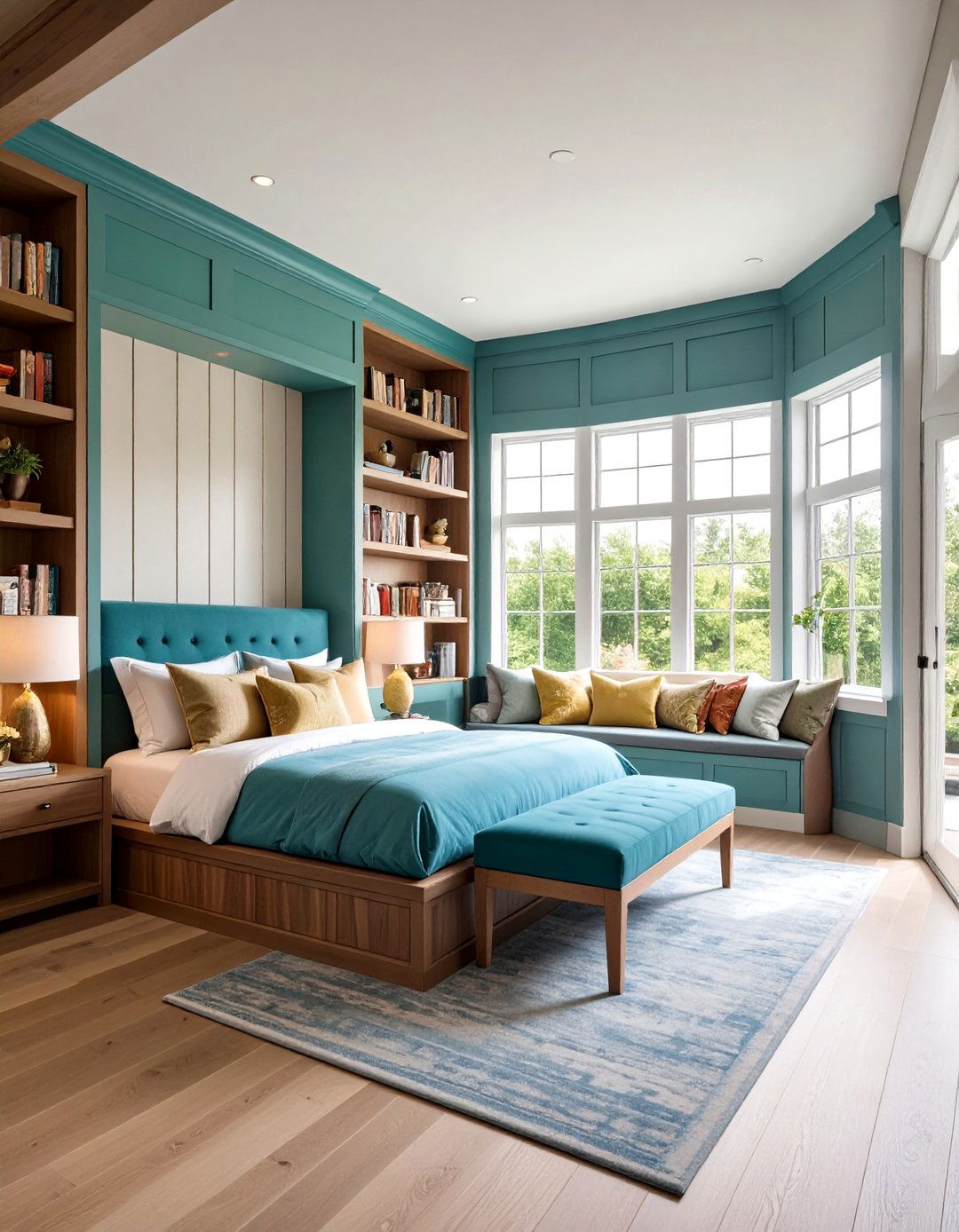
Bay or bow windows extend the room footprint outward, forming a natural cradle for seating, bookshelves, or plants. Besides charm, such projections capture morning and late-afternoon light from multiple angles, making reading comfortable longer. Reinforce sub-floor framing where loads shift to prevent future sag. If you’re retrofitting, pre-assemble the bay in factory units for faster install and superior sealing. To avoid drafty corners, specify insulated knee walls, then finish with built-in millwork under the bench for blanket storage.
12. Use Decorative Privacy Films for Style
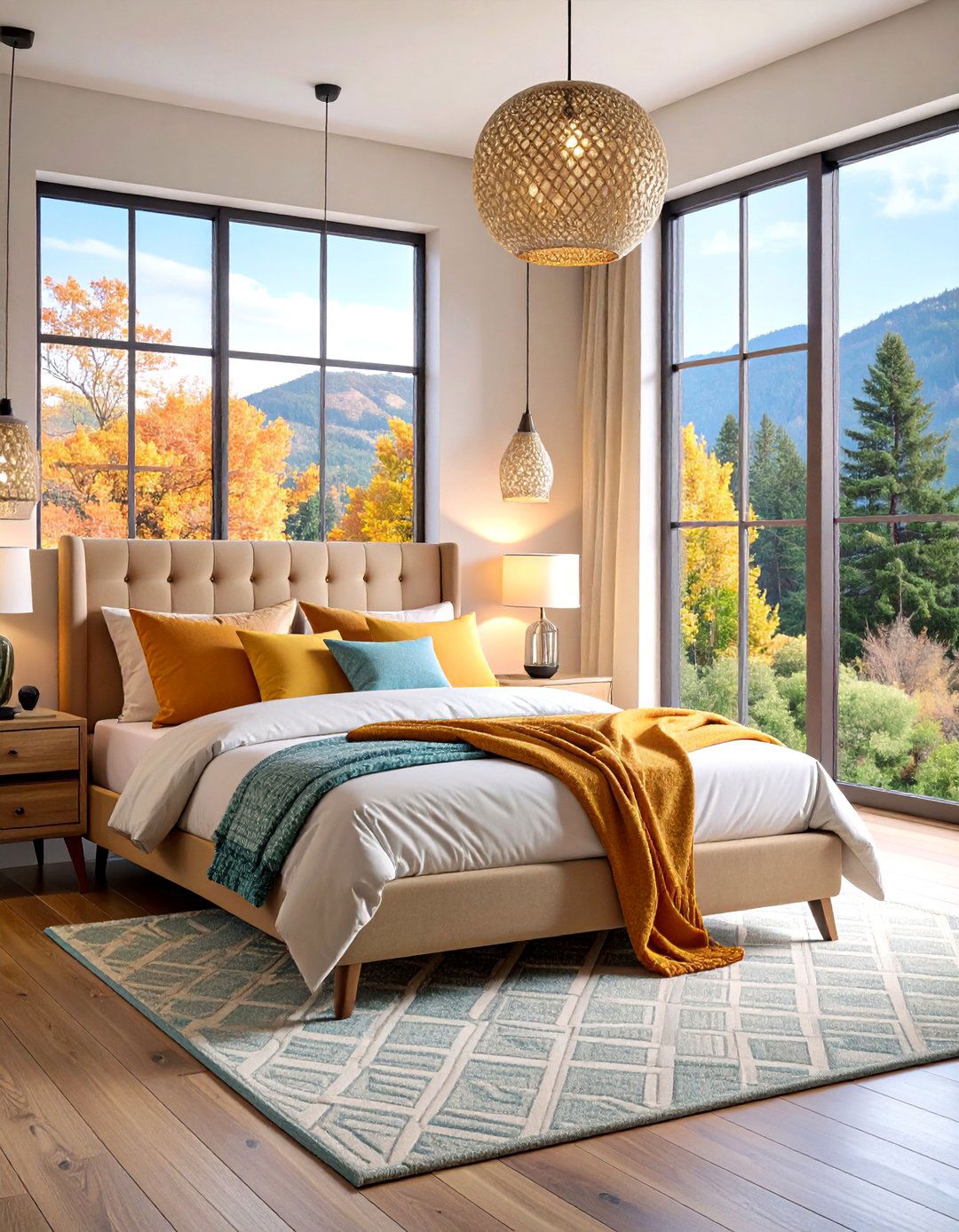
Renters can’t swap windows, but peel-and-stick privacy film solves visibility woes in seconds. Modern films now mimic etched glass, geometric grids, or even rainbow prisms while costing pocket change—and they remove without residue. Clean glass thoroughly, mist with soapy water, and squeegee bubbles outward for a flawless finish. For full blackout, layer an opaque film behind a curtain rod. Bonus: many films block 99 % of UV rays, protecting bedding from fade.
13. Balance Acoustics with Acoustic Glass Panes
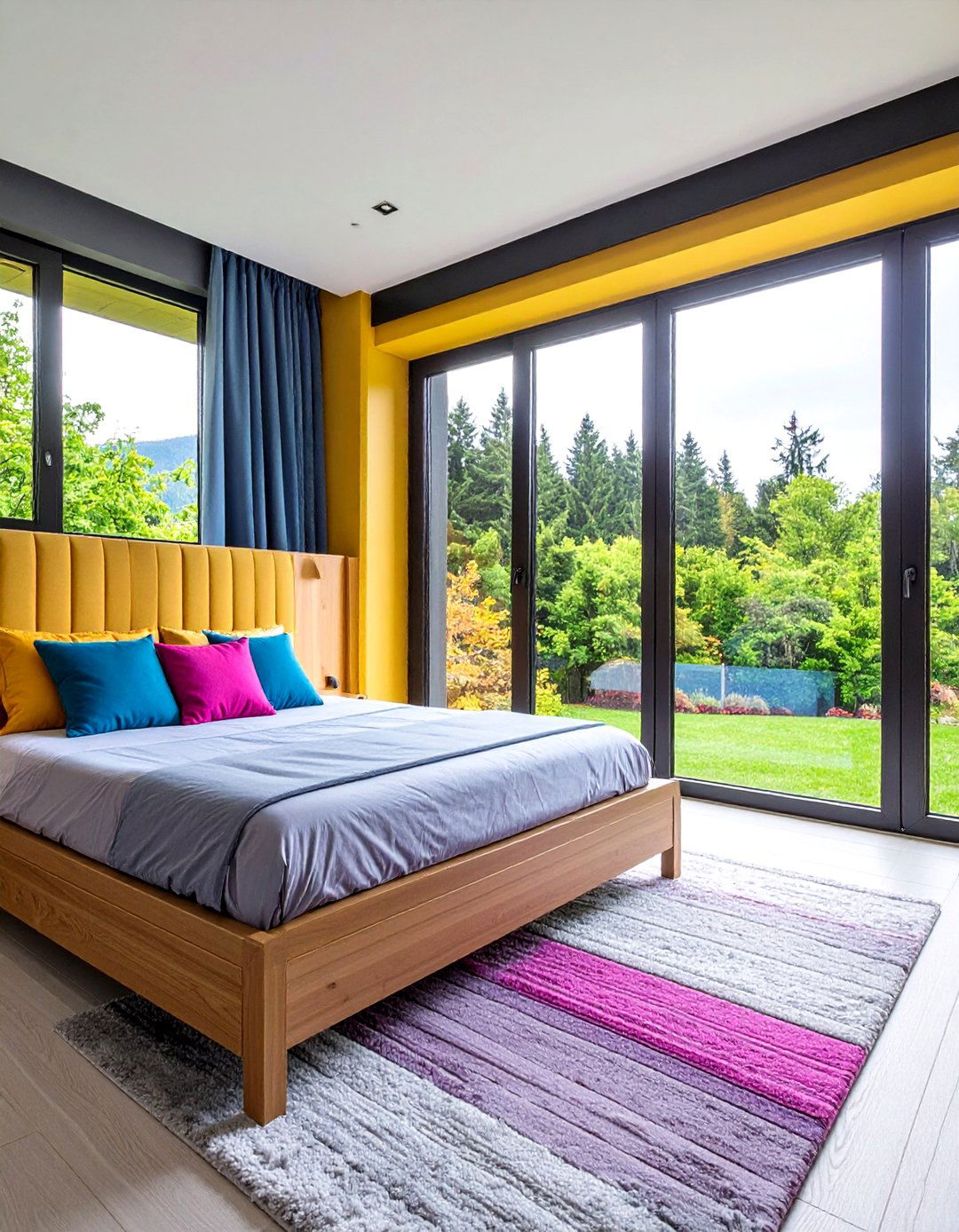
If city sirens steal your shut-eye, specialized acoustic glass sandwiches a damping interlayer between panes, reducing decibels up to 50 % in lab tests. Combine it with tight gaskets and insulated frames to stop airborne leaks. While thicker glass adds weight, modern hinges handle loads up to 120 kg; just confirm hardware ratings. For apartments, secondary “clip-in” acrylic screens achieve similar hush without landlord-approved replacements.
14. Cool Things Down with Awning Windows
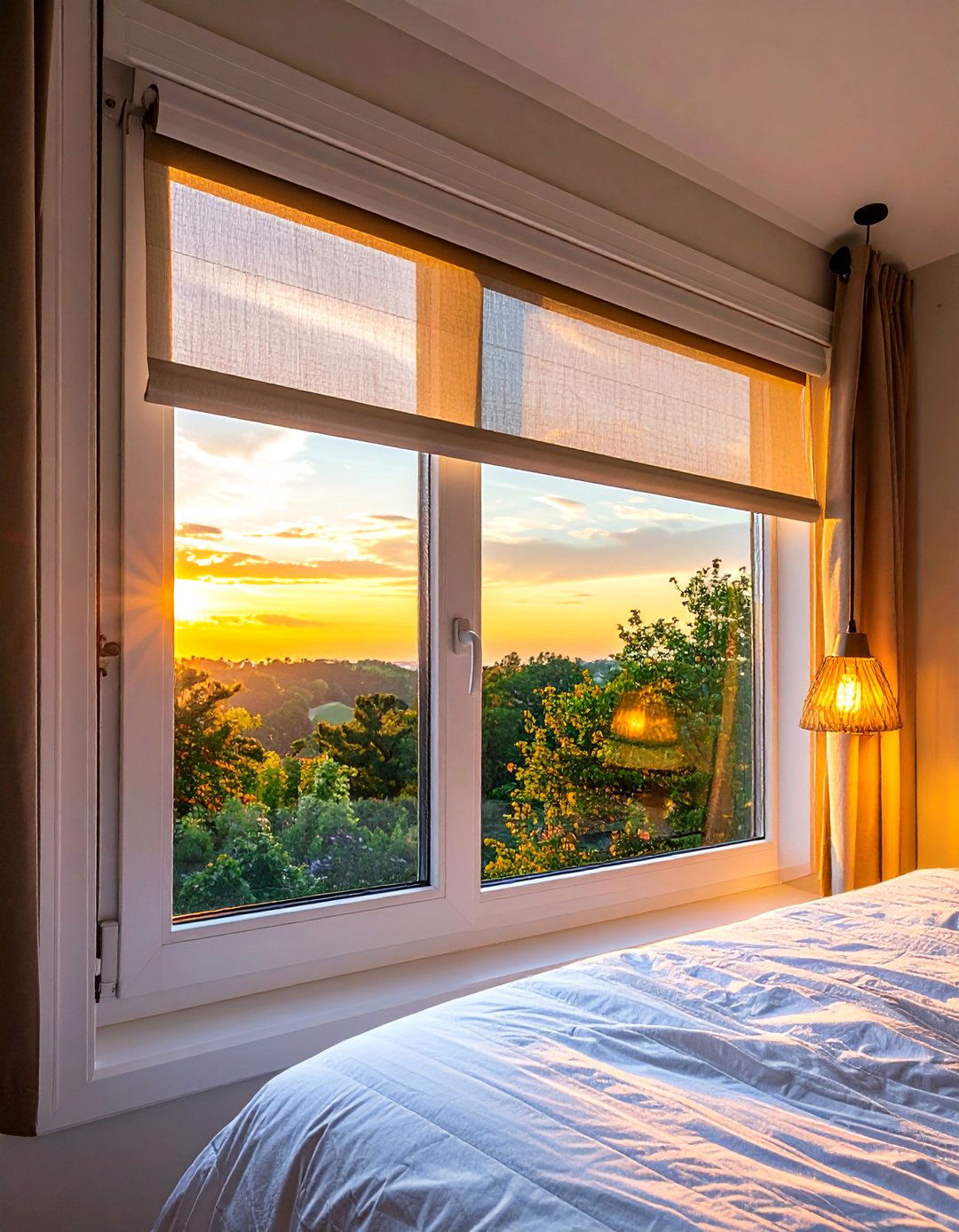
Awning units hinge at the top and push outward, letting breezes flow while blocking drizzle—ideal for night-time ventilation even during light rain. Place small paired awnings high on opposite walls to encourage cross-drafts and dilute stuffiness. When insect season peaks, integrated retractable screens hide inside the frame. For tight spaces where furniture sits close, choose crank handles that fold flat, preventing snags.
15. Illuminate with a Strategically Placed Skylight
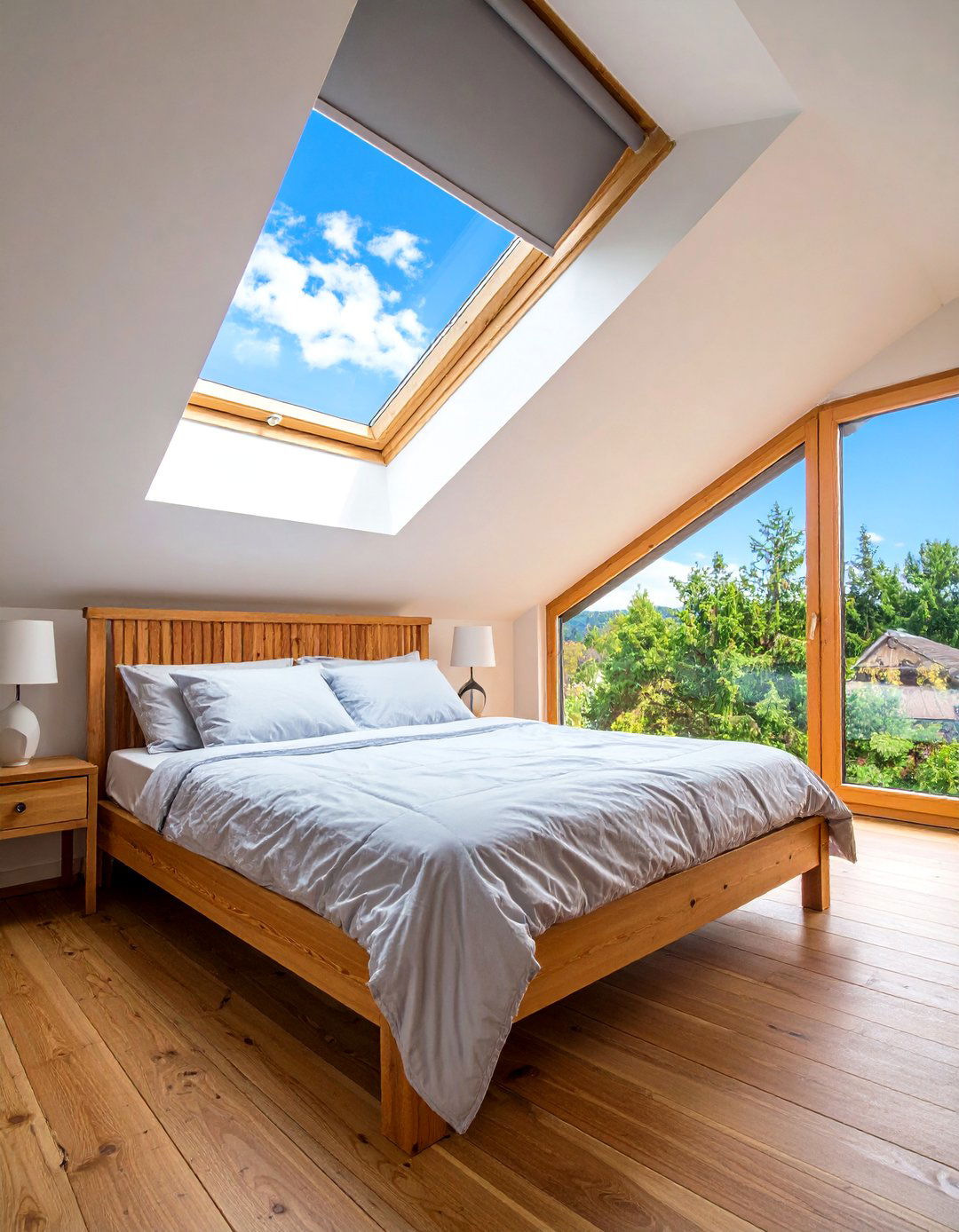
A skylight can inject five times more illumination than a vertical window of equal size, potentially trimming daytime electricity use. Angle the shaft toward the sun for winter warmth but add integral blinds or electrochromic glass to stave off summer overheating. In loft bedrooms, vented skylights double as smoke egress. Always flash units into the roof membrane with high-grade tape to defeat leaks, and specify low-U glass for energy codes.
16. Go Bold with Black Steel Window Grids
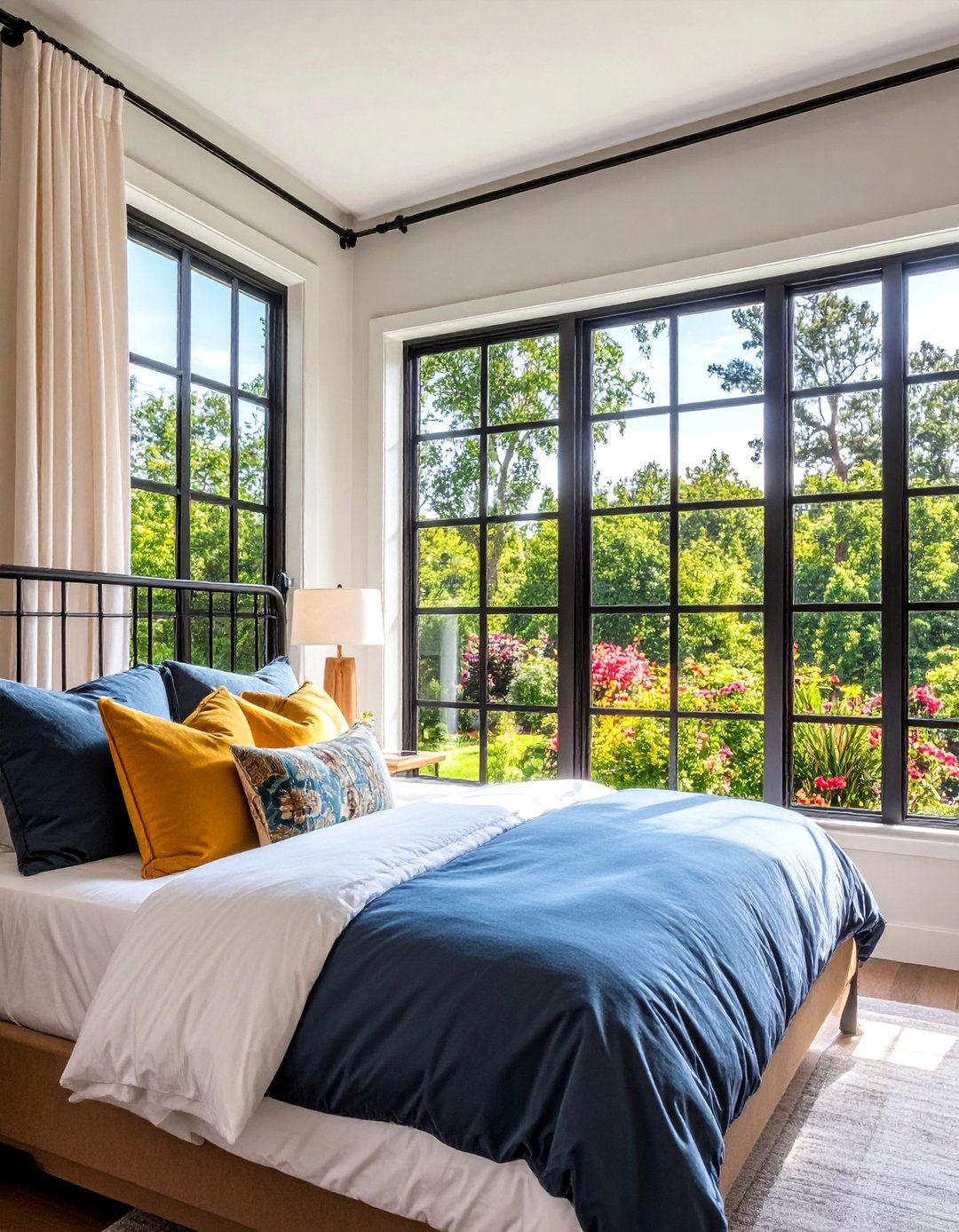
Black-framed grids bridge farmhouse character and urban chic, adding crisp definition against pale walls. Designers praise the silhouette as a high-end accent that’s surprisingly timeless. For a budget hack, snap-in muntin overlays fake the look on existing white vinyl. Maintain frames with non-acidic cleaner to avoid streaks. Offset the strong lines by repeating black in bedside lamps or drawer pulls for cohesion.
17. Blend Interior & Exterior via Sliding Glass Walls
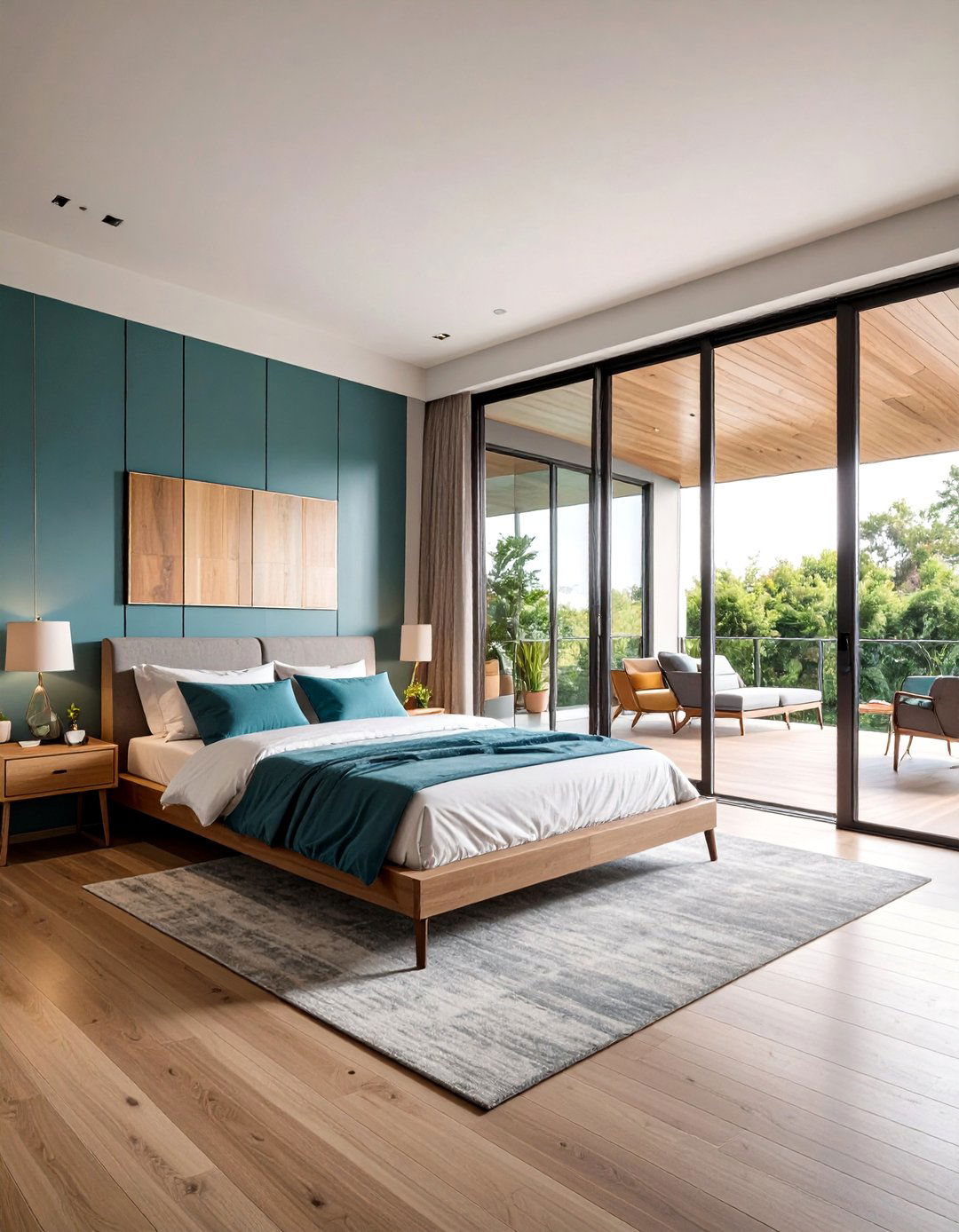
Collapsible or sliding glass walls erase barriers between the bedroom and a courtyard, letting morning air flood in. Systems include thermally broken aluminum tracks that protect against condensation while enabling panels to stack neatly. Specify flush floor channels so bare feet glide smoothly outside; add concealed drainage to divert rain. For privacy, integrate internal blinds sealed between panes—or rely on automated drapery pockets in the ceiling.
18. Add Nature by Flanking Windows with Indoor Plants
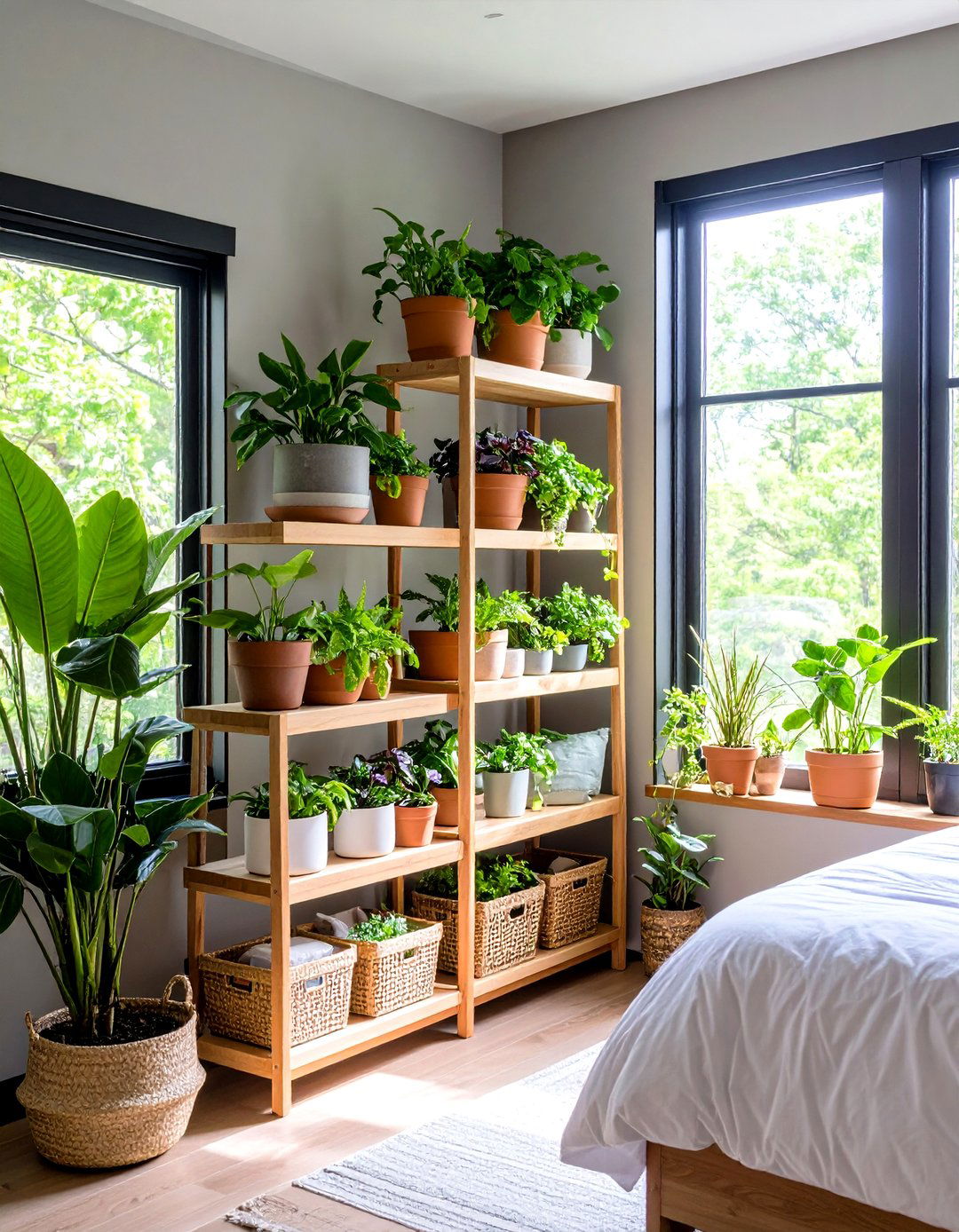
Houseplants might not purify air as dramatically as early studies suggested, yet they do soften hard glazing lines and boost perceived wellbeing, all while absorbing small amounts of VOCs. Group pots on tiered stands by the sill so leaves catch filtered sunlight without blocking views. Self-watering planters keep soil consistent, and insecticidal soap deters pests that thrive in humid micro-climates near glass.
19. Mix Textures Using Bamboo or Woven-Wood Shades
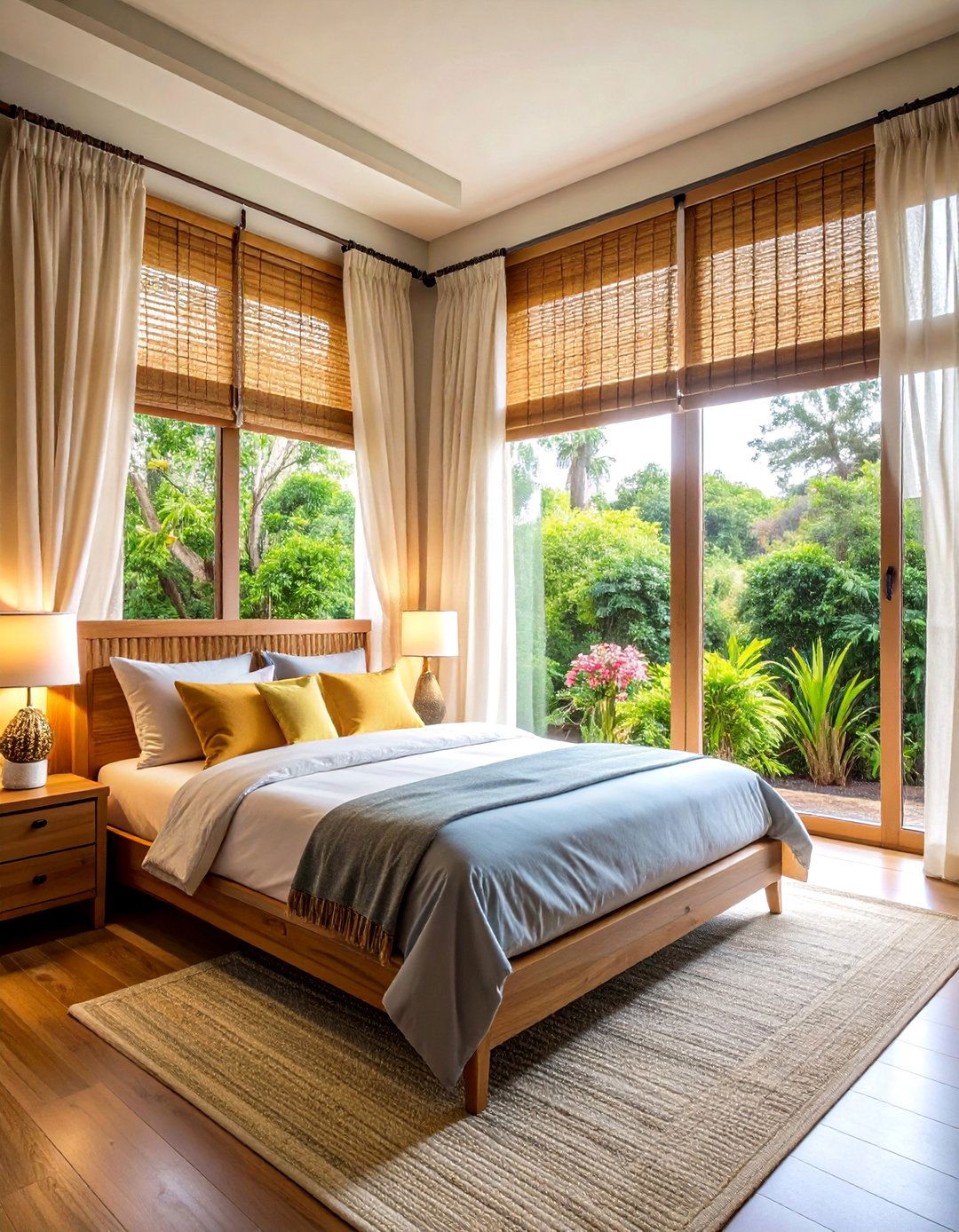
Earth-toned woven shades crafted from bamboo, reeds, or jute introduce tactile richness and eco-friendly credentials. Inside mounts highlight window architecture; outside mounts widen small panes visually. Order optional blackout liners if you need full darkness or motorization for tall windows. Keep cords hidden to meet child-safety codes. Layer sheer linen drapes over the woven texture for a resort-inspired contrast.
20. Finish with Smart, Voice-Controlled Window Treatments
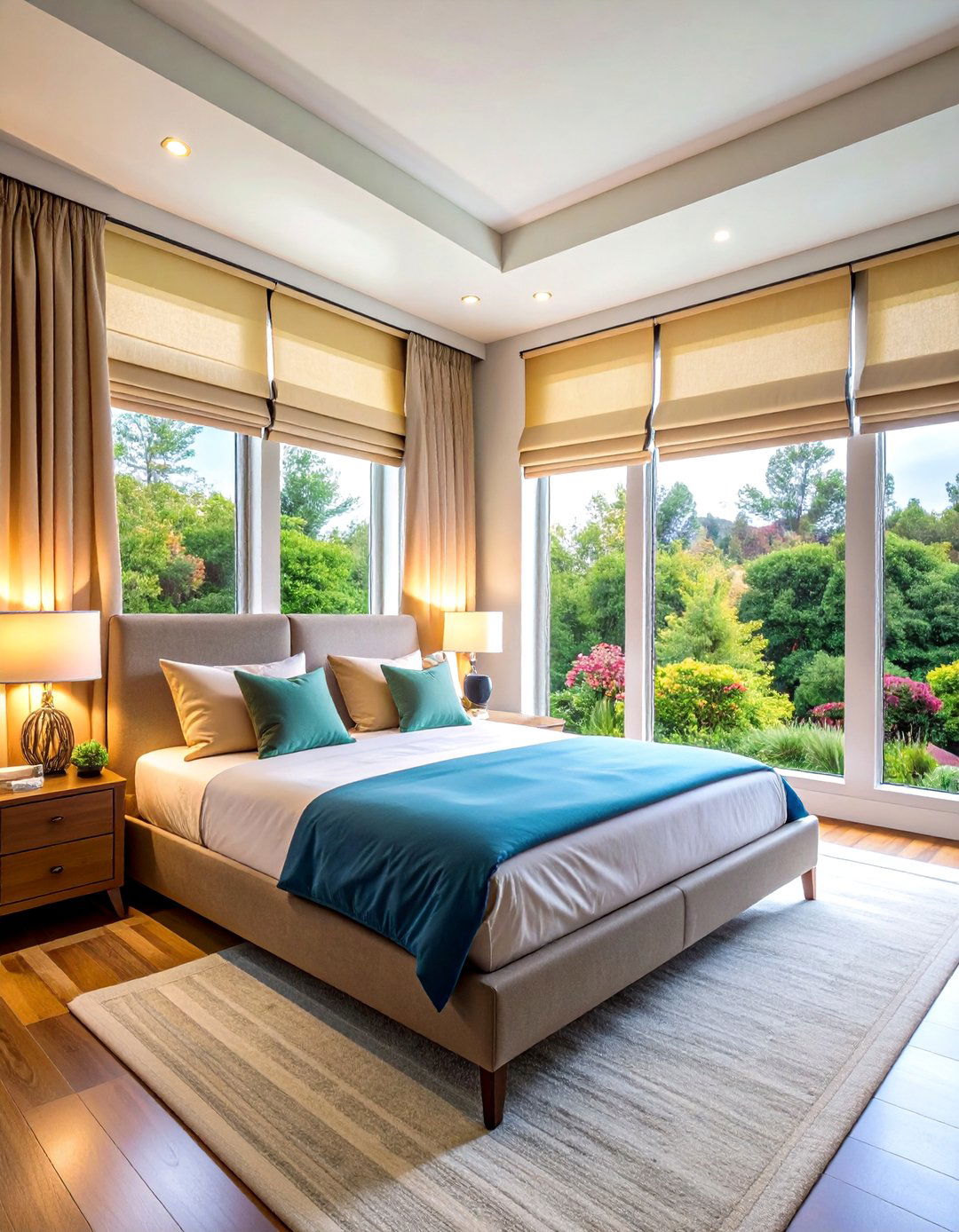
Tech-savvy solutions—ranging from Bluetooth blinds to matter-enabled drapery motors—complete a 2025-ready bedroom. Voice assistants can raise shades to a sunrise schedule, lower blackout drapes for movie night, or sync to thermostats for passive cooling when temperatures drop after dusk. Pick rechargeable battery tubes for retrofit ease or hard-wire during remodels. Check noise ratings under 45 dB for whisper-quiet operation, and ensure your chosen hub supports over-the-air security updates for ongoing privacy.
Conclusion:
Bedroom windows are more than glass; they’re gateways for light, airflow, sound control, and mood. From expansive floor-to-ceiling vistas and switchable smart glass to tactile woven-wood shades and voice-controlled blackout drapes, each idea above lets you tailor privacy, efficiency, and style to how you live. Combine the concepts—perhaps a clerestory for daylight, acoustic panes for hush, and a motorized sheer-plus-drape combo—to craft a restful, future-proof retreat that truly frames your best nights and brightest mornings.


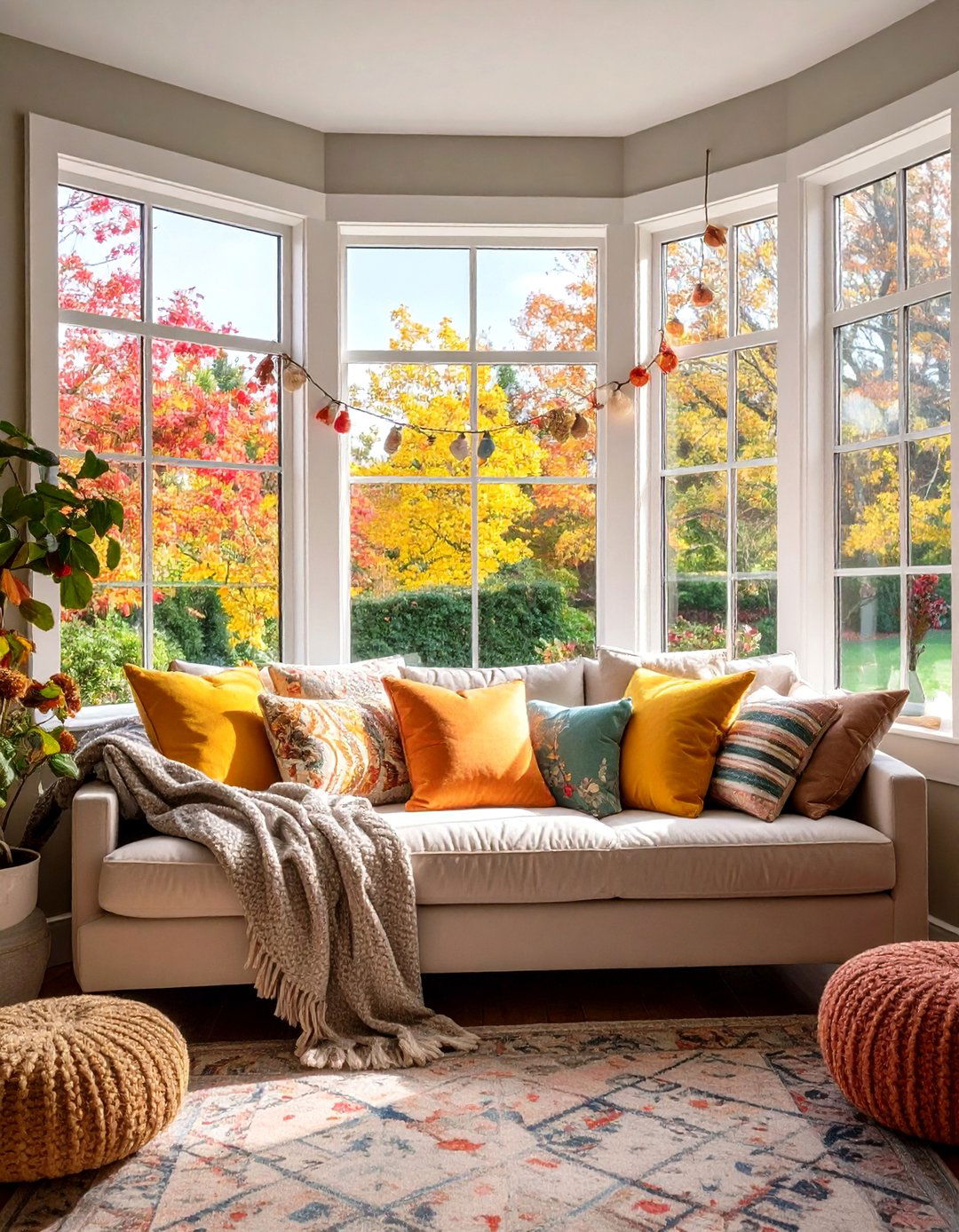

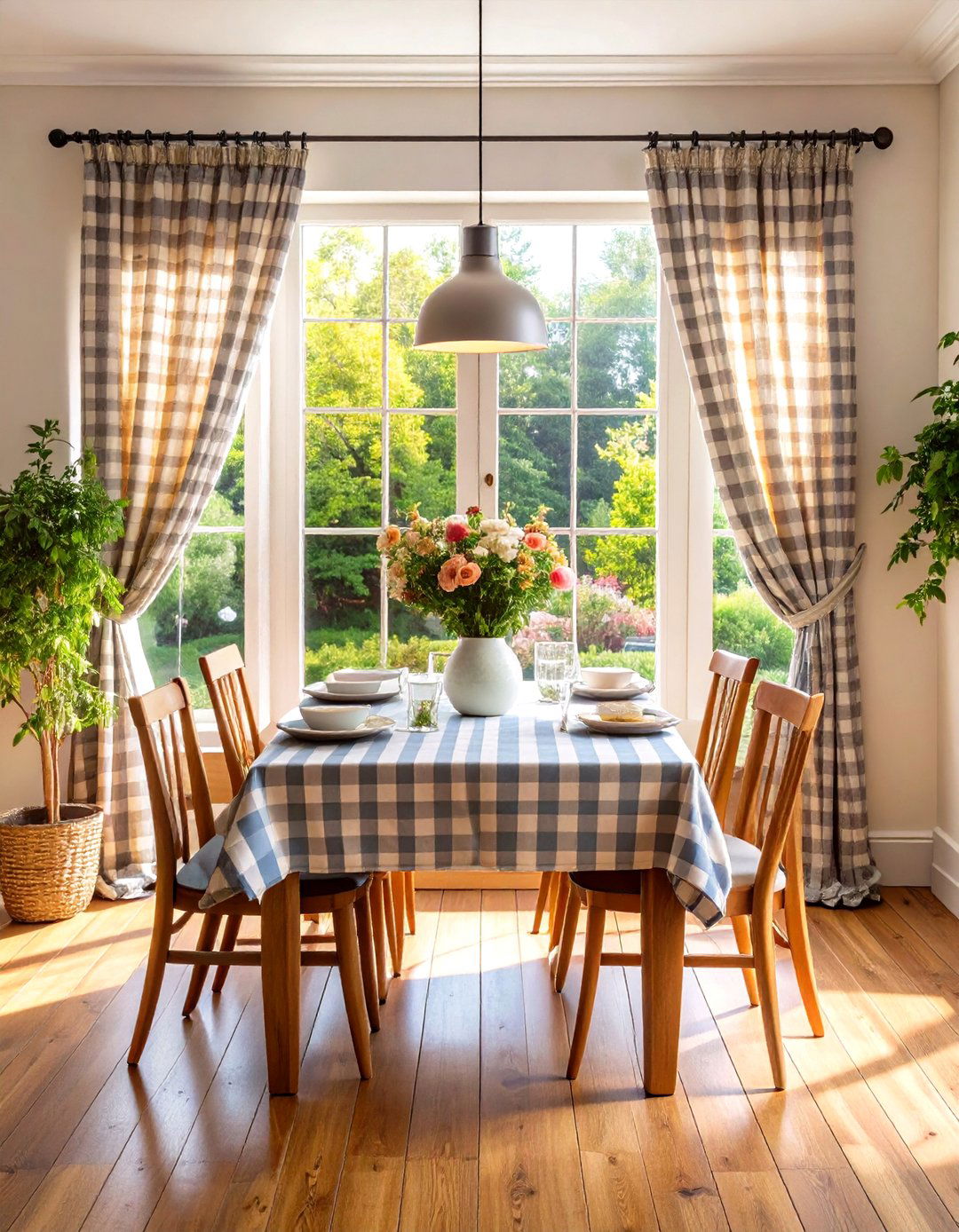
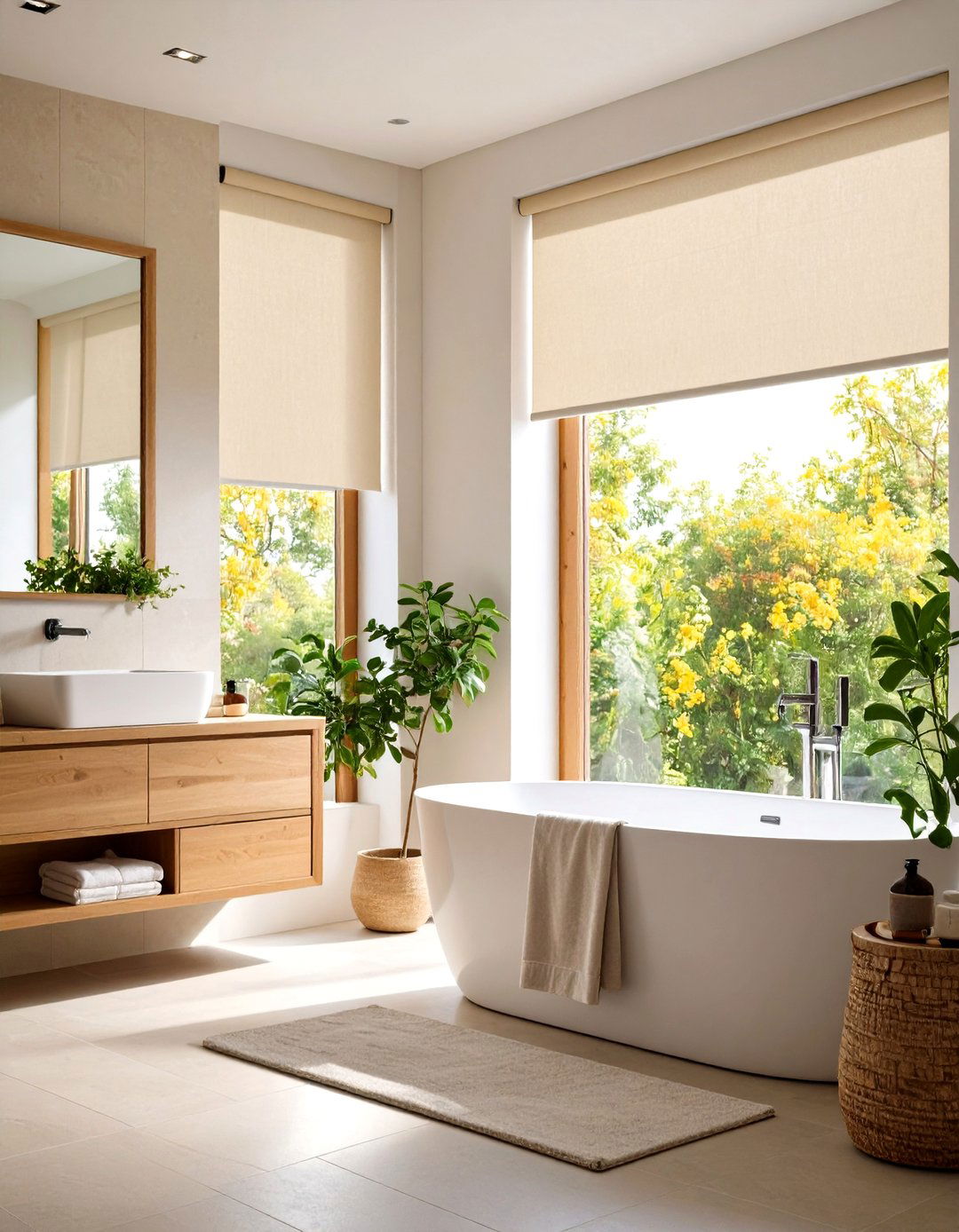
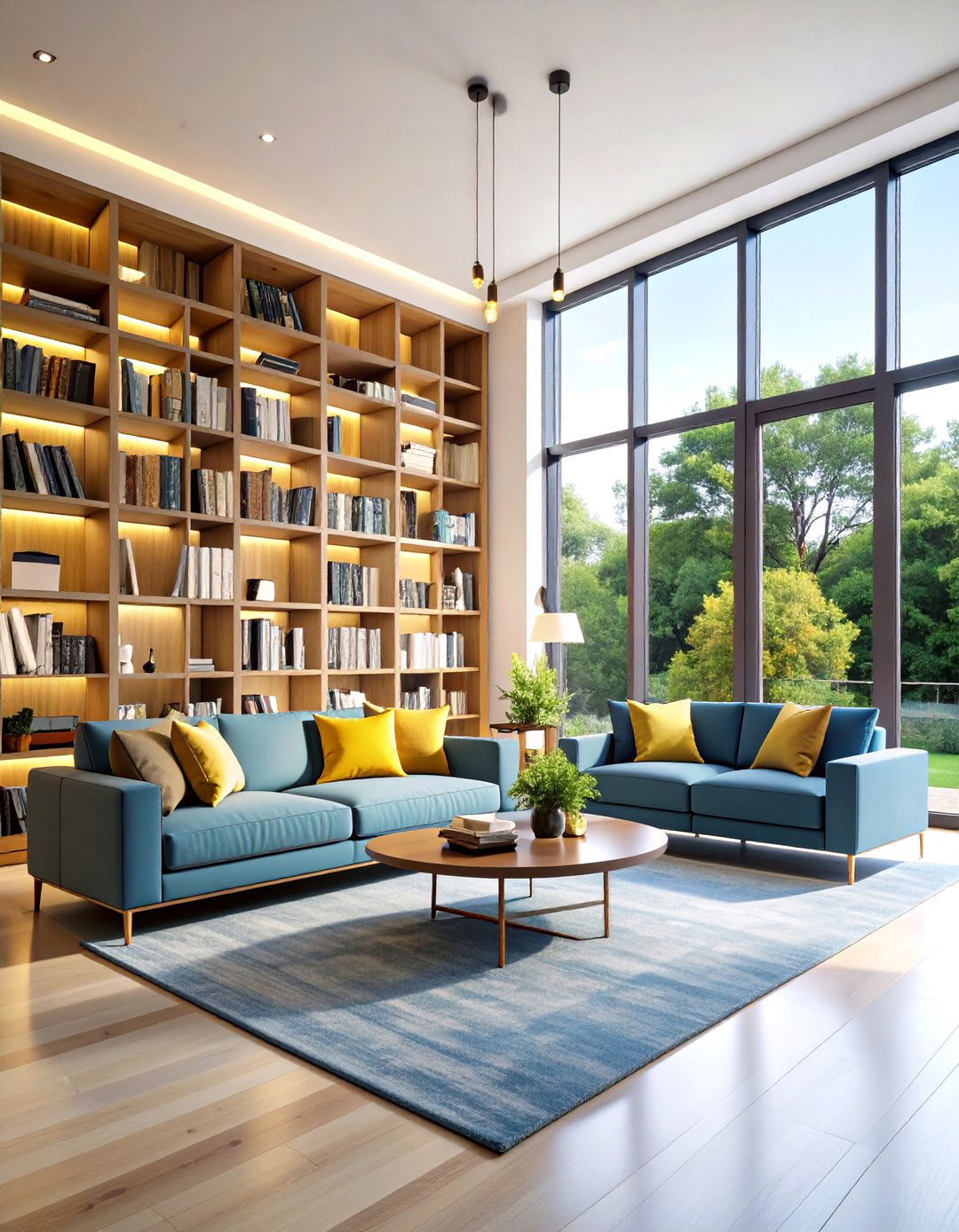

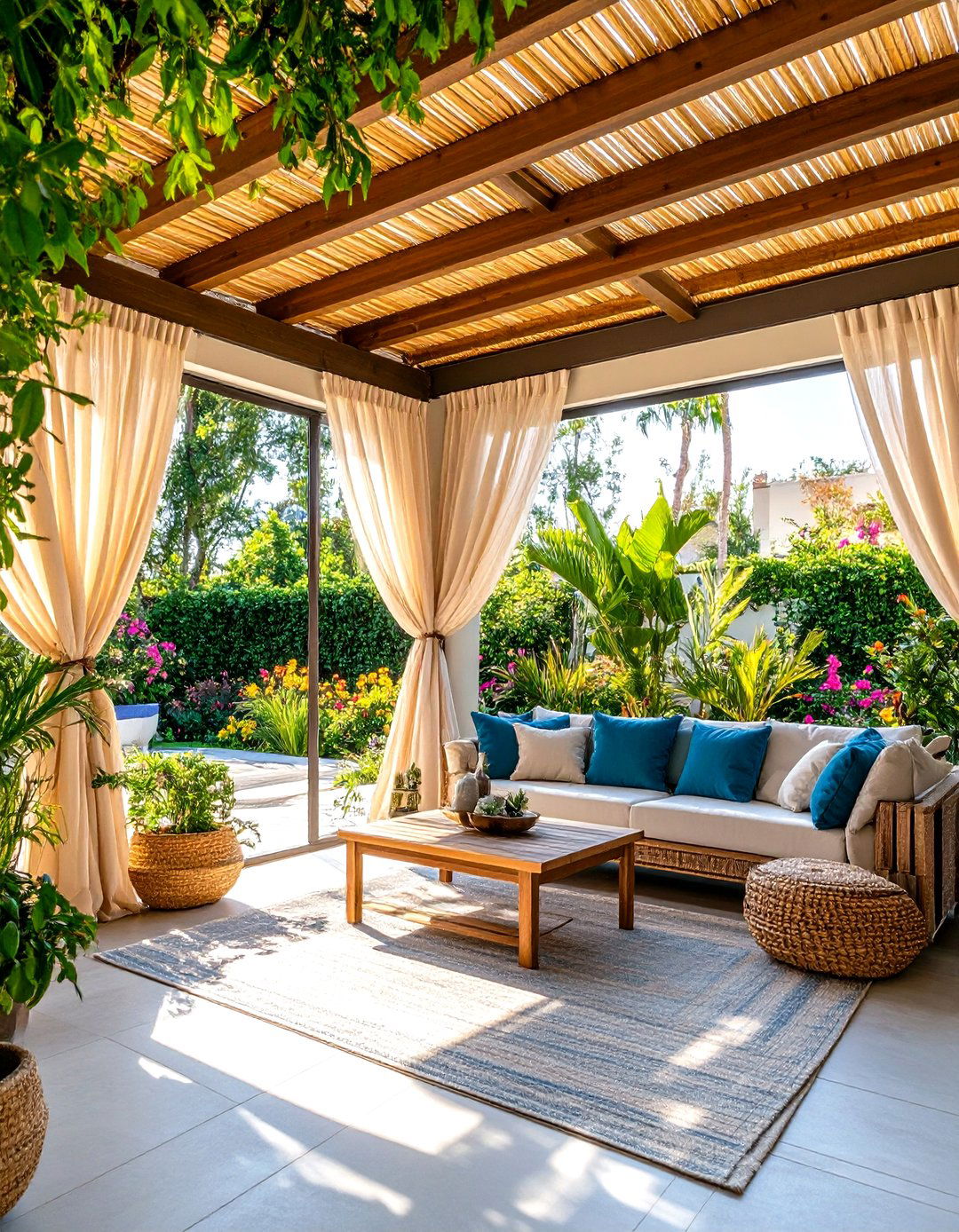
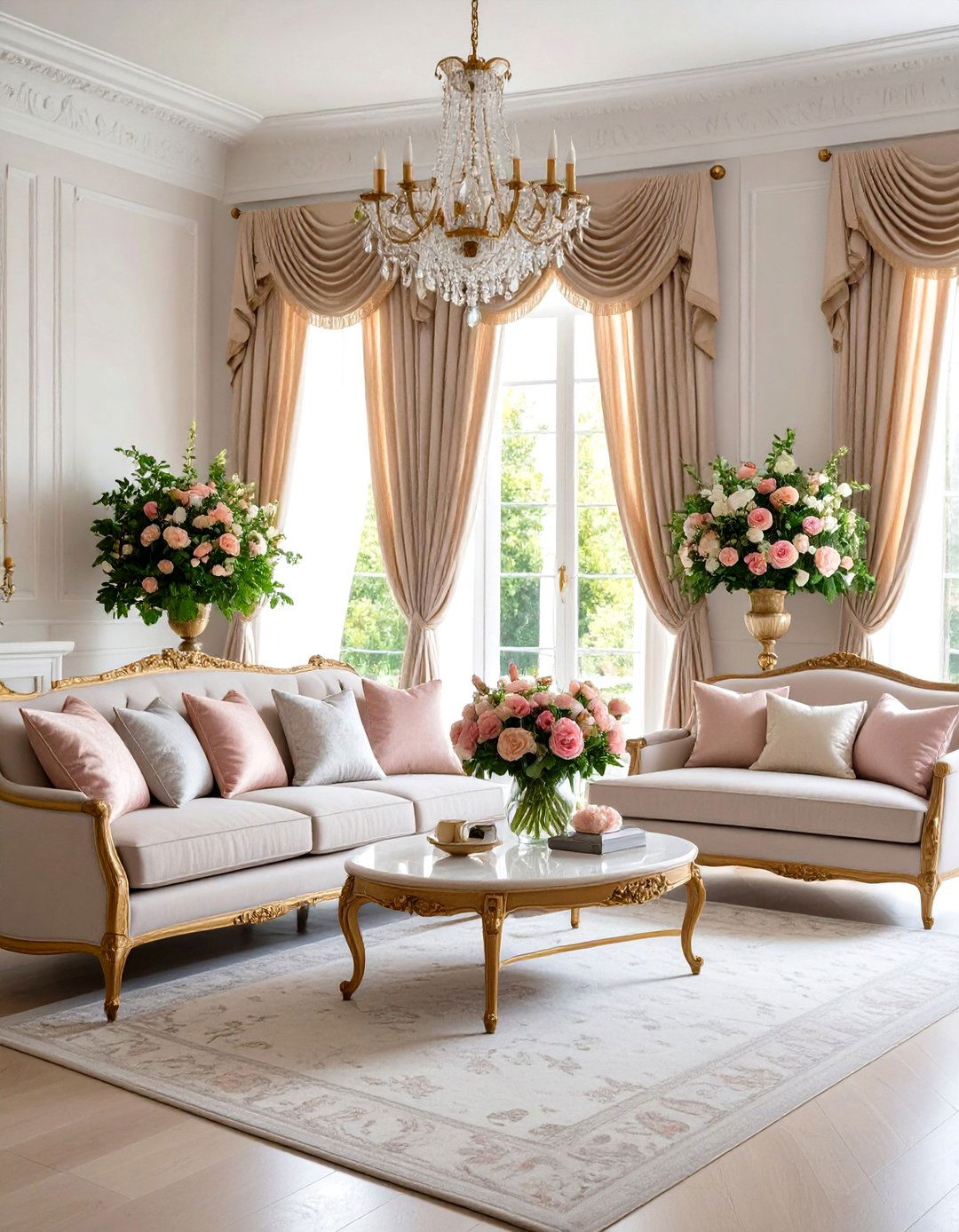
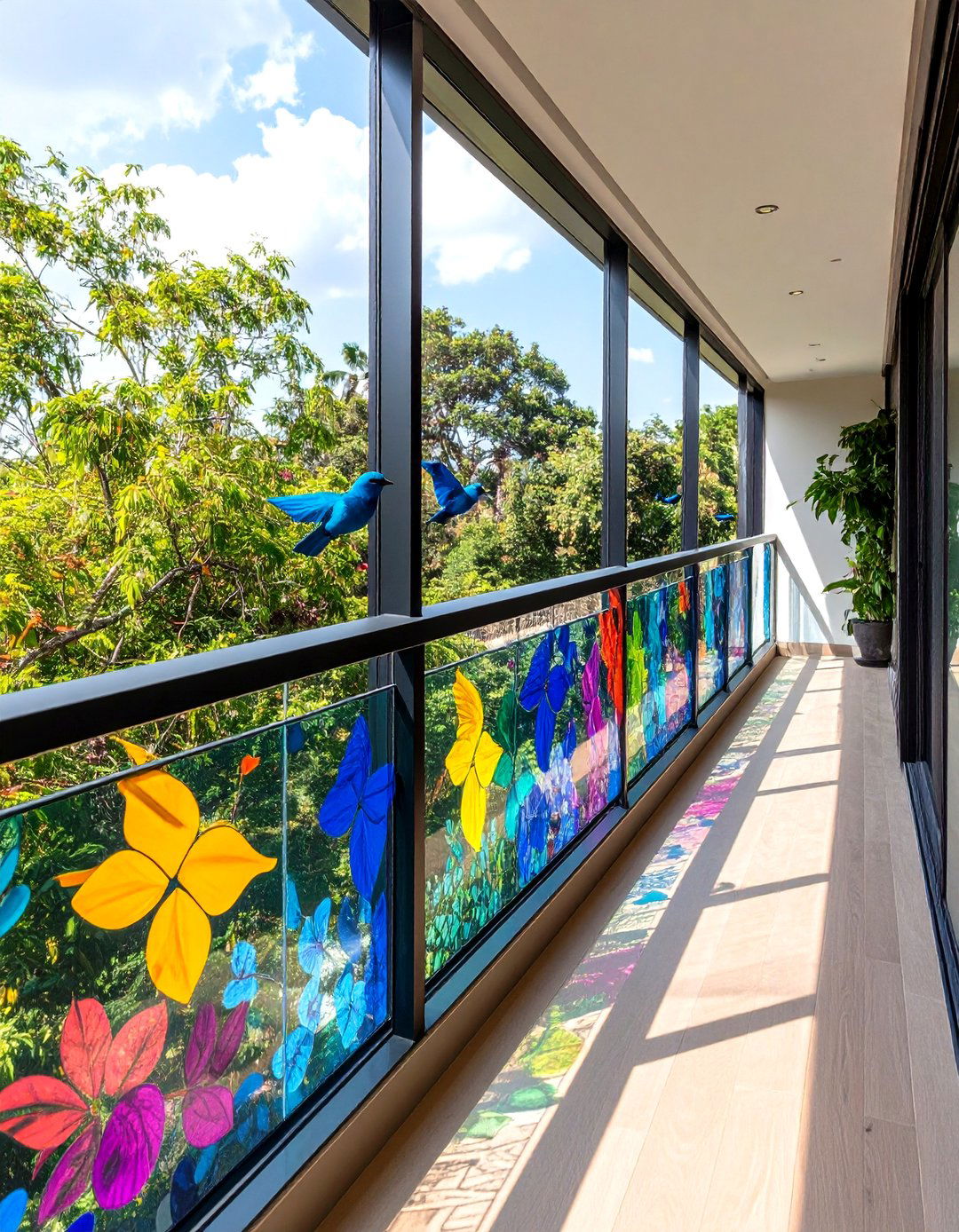
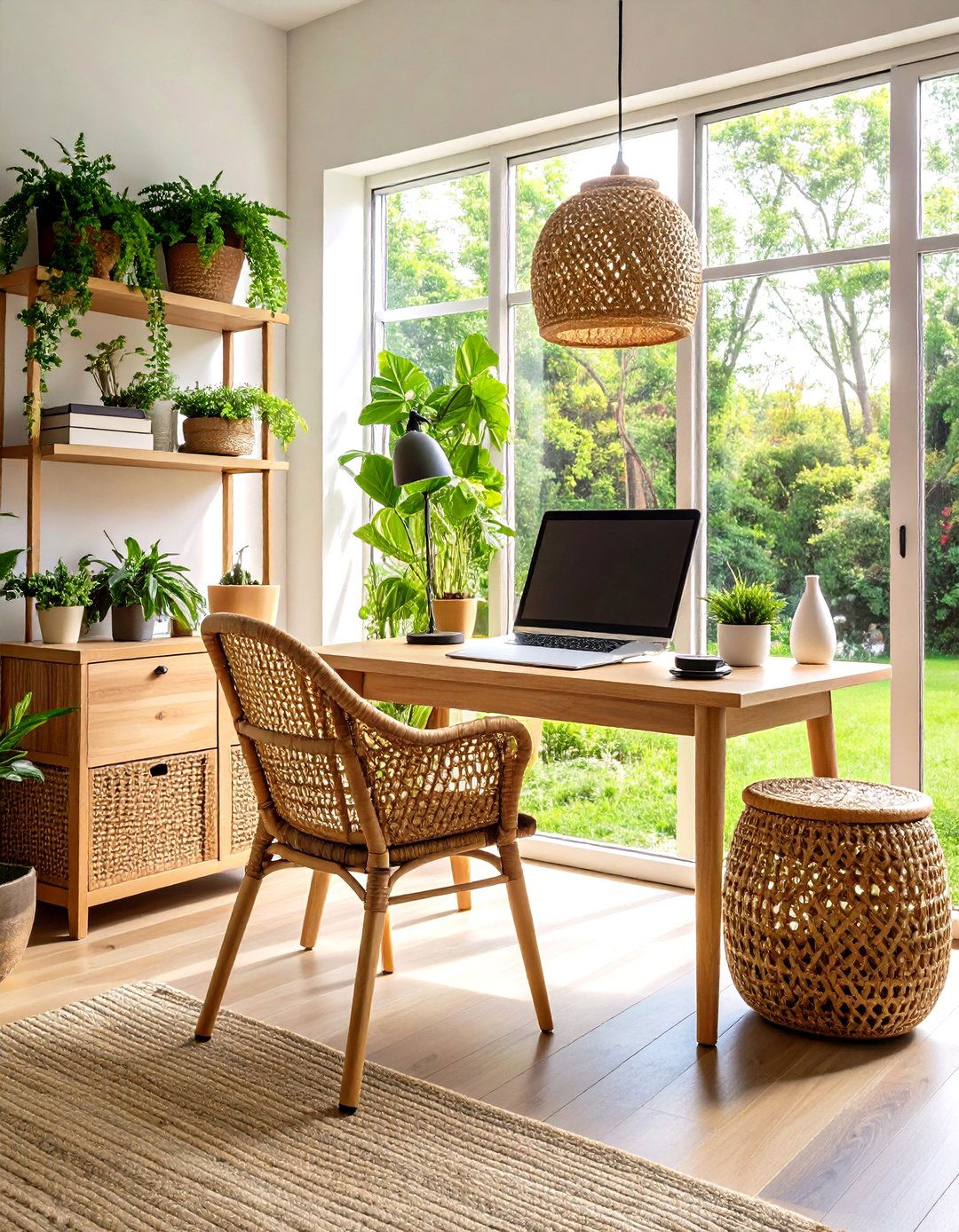



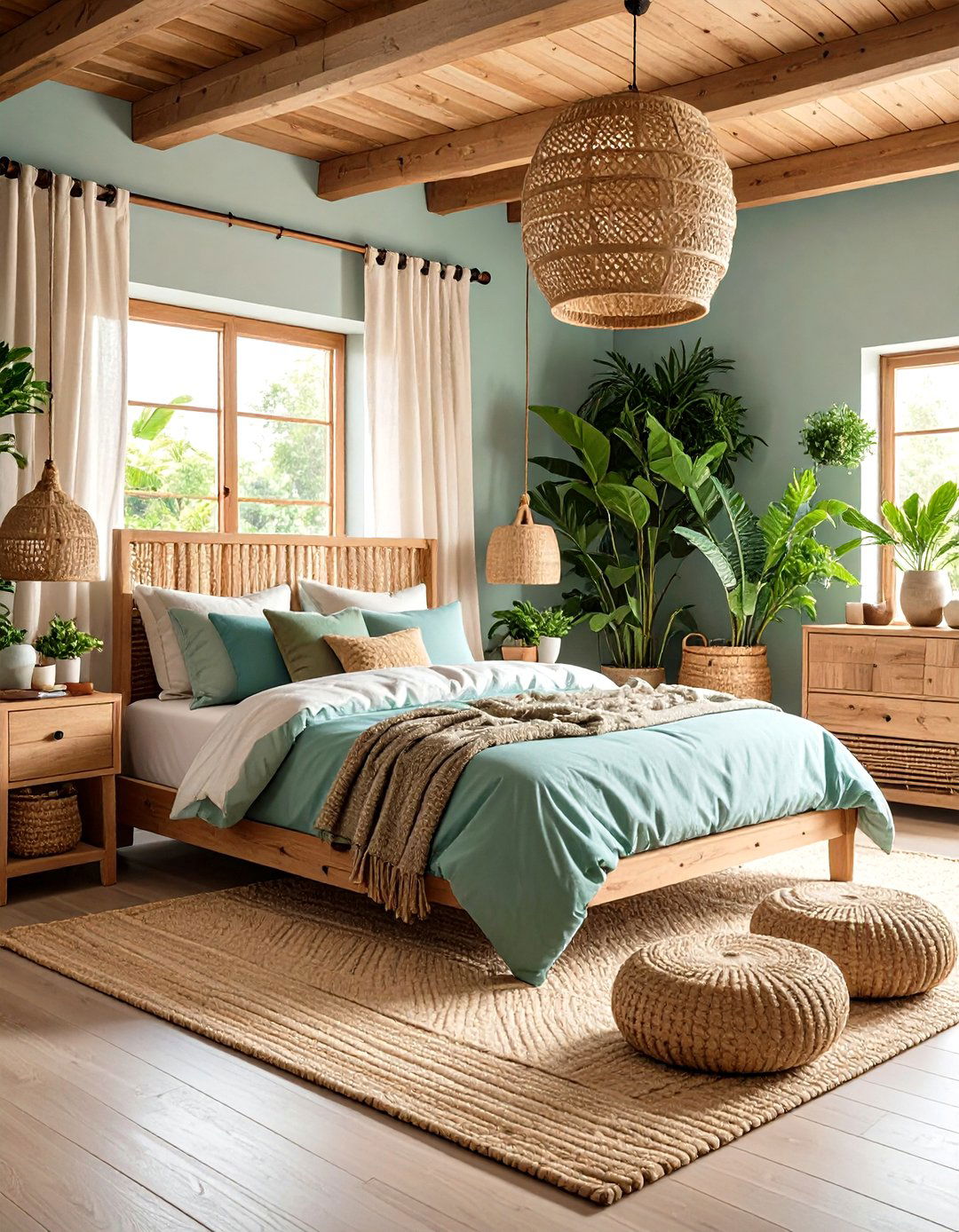
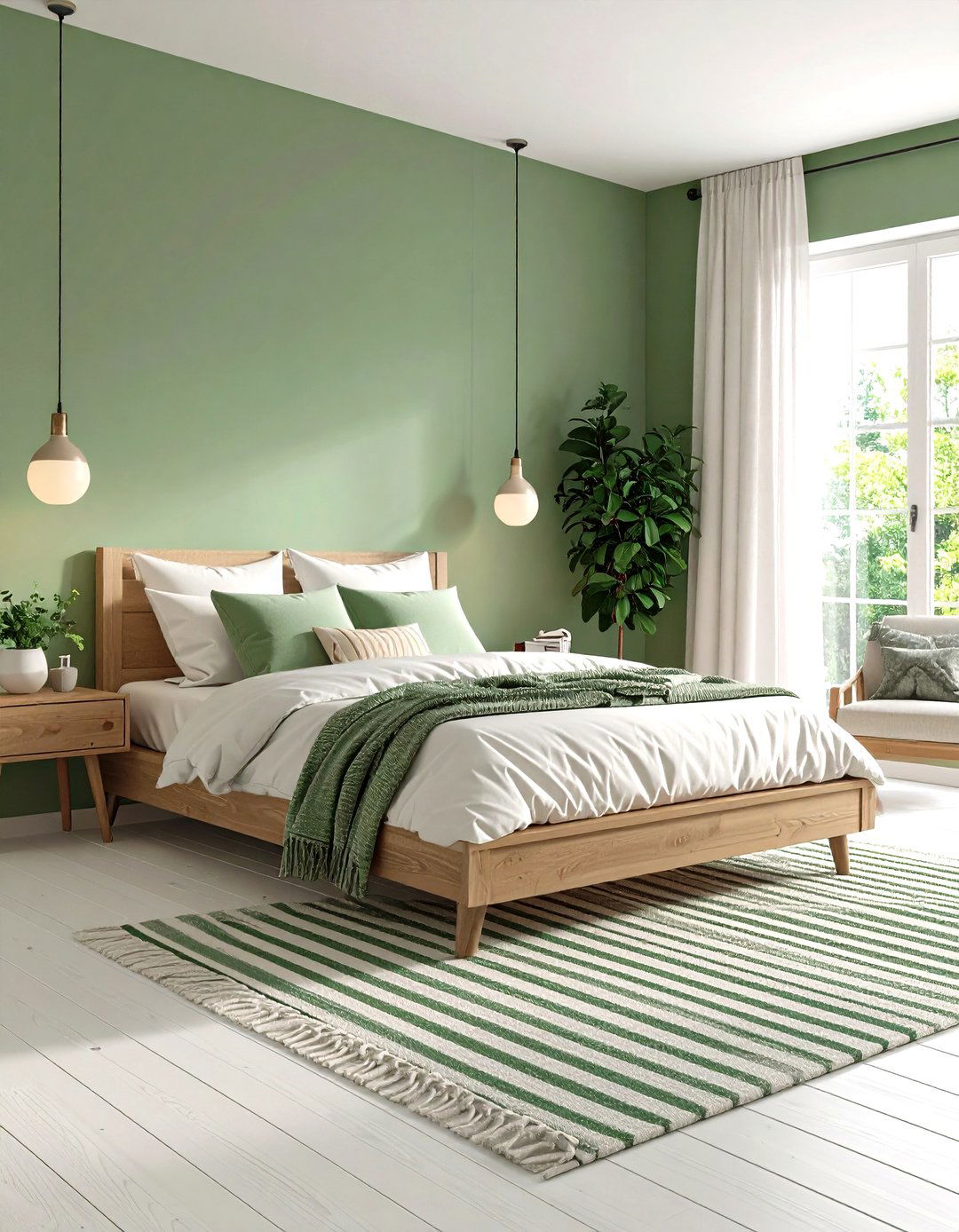
Leave a Reply